The United States is pretty much the perfect country to road trip in, with great roads, cheap gas and hundreds of gorgeous destinations to choose from. It’s no wonder that a California road trip is on many visitors to-do lists!
We’ve taken a number of fantastic US road trips, including Route 66, the Pacific Coast Highway, the Oregon Trail and a route through the Deep South, and have never failed to have an amazing time.
One of our favourite states to explore though has to be California. With a mix of an excellent climate, some of the best National Parks in the country, and world-famous cities to explore, you’re never going to run short of things to do in California.
With this in mind, I wanted to put together a classic two week California road trip itinerary, taking in some of the best that the sunshine state has to offer. I did a trip almost exactly the same as this a few years back, so I know that it’s a good one.
Two weeks is also a good amount of time for a trip like this, although you could of course extend it by a few days if you wanted to see a bit more, or wanted to go a bit slower.
Table of Contents
California Road Trip Itinerary
This California road trip itinerary has you starting and finishing in San Francisco. As it’s a loop, you could also start and finish at any other point. If you would prefer another starting location, LA would be the most logical.
The route runs anti-clockwise, but you are welcome to drive it in whichever direction you prefer!
San Francisco – 3 Days
We’re going to start our California road trip with three days in San Francisco. San Francisco is home to the second largest airport in California, so there are plenty of opportunities for getting here for both domestic and international travellers.
San Francisco, and the surrounding San Francisco Bay Area is also an excellent city to base yourself for your first three days.
If you’re arriving internationally, you’re going to want a few days to adjust to the time zone difference before hopping into a car. For this reason, I’m going to recommend spending three nights in San Francisco, and picking up your hire car as you leave. You won’t want (or need!) a car while you’re in the city – parking is expensive and there are plenty of other options to get around.
You won’t be short on things to do in San Francisco, and in fact, might feel a little overwhelmed by all the choices!
Our suggestions would be to take in the Golden Gate bridge (hire a bike to get here easily), explore Chinatown, pop across to Alcatraz, revel in the tourist trap that is Fisherman’s Wharf, don’t miss golden gate park, head to the top of Nob Hill for cocktails at The Mark, hop on a cable car and, if you still have time, take a stroll at Lands End.
To get yourself oriented, we can also recommend taking a walking tour with the excellent SFNative folks, they know the city backwards. Finally, if you’re looking for some great photo opportunities, check out our guide to the best photography locations in San Francisco.
Accommodation wise, there are plenty of options in San Francisco. Here are some of our favourite picks for your stay, across a range of budgets.
- HI San Francisco Fisherman’s Wharf Hotel – found right on Fisherman’s Wharf, this budget hostel offers both dormitory and private accommodation options. There’s free breakfast and free parking, making this an excellent option for the location.
- Marines’ Memorial Club & Hotel – found in the popular Union Square district, this great value 3-star hotel has a rooftop restaurant, library, and on-site theatre. Rooms have private bathrooms and coffee makers, and breakfast is included. A paid parking garage is available nearby.
- Parker Guest House – found in the old Mission district just behind the San Francisco mission building, this is a well reviewed and good value guesthouse offering private rooms. Free breakfast is available, and parking is available on site for a reasonable (by San Francisco standards) fee.
- Columbus Inn – Just a few hundred yards from Lombardy Street and Fisherman’s Wharf in the North Beach district, this 3* inn offers great value for the location. Private rooms offer en-suite and tea/coffee making facilities. There’s also free parking on site.
- Golden Gate Hotel – a very well reviewed 3* hotel just minutes from Union Square. Continental breakfast and afternoon tea are included. Rooms are definitely on the cosy side, and some have shared bathrooms, but the price is great for the location. Paid parking available nearby.
- Staypineapple Union Square – we stayed at this restored historic 4* 1913 hotel on a recent trip to San Francisco, and loved the mix of the old and the new. We loved the rooms, the colorful pineapple theme, and the free pineapple flavoured cupcakes certainly helped! Parking is available nearby for a fee.
- Four Seasons Hotel – if you are after five star luxury, then consider the Four Seasons hotel. Also found in Union Square, rooms are huge, there’s an on-site restaurant, fitness centre, and many rooms have city views.
See more options for hotels in San Francisco here, as well vacation rentals on Plum Guide here and Vrbo here.
Pacific Coast Highway – 2 Days
The drive down the section of the Pacific Coast Highway from San Francisco to Los Angeles is definitely one of the best road trips in the world. So it’s really a no-brainer that this would be your first destination after you pick up your hire car and head out of the city.
There are numerous highlights along the way, from cute seaside towns to gorgeous wilderness areas. Don’t miss Santa Cruz, Monterey, Big Sur and the Julia Pfeffer Burns State Park (camp here if you can!).
The latter is particularly famous for the waterfall that cascades onto the beach, a gorgeous photo opportunity.
From Big Sur head further south and take in highlights like the seals at Cambria, tasty food at San Luis Obispo, the gorgeous Pismo beach, Hearst Castle and more.
For loads more information on this stretch of highway and to help you plan the perfect coastal road trip, check out our super detailed guide to planning a Pacific Coast Highway road trip.
For the 2 days you’ll spend on this part of your California road trip, we recommend stopping overnight around Monterey or Carmel on your first night, and San Luis Obispo, Morro Bay or Cambria on your second night.
There are plenty of accommodation options all the way down this stretch of highway, from campsites and B&B’s to luxury hotels – it all depends on your budget and what you’re aiming for. Here are a few options to consider in our recommended towns along the way.
For your first night, we recommend one of the following:
- If you like to camp, then there are camping options in the national parks along the route here, including the Pfeiffer Big Sur Campground. I’ve camped here and it’s lovely to be surrounded by the massive redwoods. Just be aware that it is popular, and booking in advance is a must.
- Sandpiper Inn, Carmel – we stayed here when we visited Carmel. We enjoyed the comfortable rooms, inclusive breakfast, and proximity to the beach. Free parking is available.
- Coachman’s Inn, Carmel – we’ve stayed at a number of the boutique hotels which are in the Four Sisters Inn collection, and they’ve all been excellent. This inn, found in the heart of Carmel Village, gets good reviews. Rooms include coffee makers and free popcorn, wine with hors d’oeuvres is served in the evenings, and breakfast is included.
- The Inn at 1252, Monterey – a good value inn on the way into Monterey. Rooms feature coffee makers, and a heated pool is available year round. There’s also a fitness room, free parking and free coffee.
- The Jabberwock B&B, Monterey – just a few blocks from Cannery Row, this very well reviewed B&B offers seven lovely guest rooms, some of which have fireplaces and hot tubs. Free parking, and breakfast is included.
For your second night, we recommend one of the following:
- Apple Farm Inn, San Luis Obispo – we really enjoyed our stay here on one of our Pacific Coast Highway road trips. The rooms are spacious and comfortable, the breakfast was fantastic, and the on-site bakery has some delicious food. There are also two pools on site, and free parking.
- Madonna Inn, San Luis Obispo – this four star family-owned motel just to the south of SLO is a truly quirky destination, and a landmark of the central coast. Each of the 110 rooms is uniquely decorated, with pink being a key theme throughout. We didn’t stay here, but we did have dinner at the Gold Rush steak house on-site, which was fantastic.
- Seaside Inn, Morro Bay – this 2* budget inn is one block from the waterfront. Rooms have a microwave and refrigerator, and there’s free on site parking and coffee.
- Beach Bungalow Inn and Suites, Morro Bay – five minutes walk from the aquarium, this three star inn is very well reviewed. Comfortable rooms have fireplaces, refrigerators and coffee machines, and a hot breakfast is included as is parking.
- Cambria Palms Motel, Cambria – this 2* motel is a couple of blocks from downtown, and offers comfortable rooms at a good price. Rooms have refrigerator and coffee machine, and free parking is available on site.
- El Colibri Hotel & Spa, Cambria – on one of our visits to Cambria we stayed here for a couple of nights and really enjoyed it. The rooms are lovely, with fireplaces, and some have spa tubs. There’s an on-site spa, outdoor hot tub, and breakfast is available. Free parking on-site.
- J Patrick House B&B, Cambria – this five star Irish themed inn was Cambria’s first B&B. There’s a a free wine hour, evening cookies and a full breakfast included with your stay. Each room is individually designed, and there’s free parking on site. A great pick in Cambria.
Santa Monica, LA – 2 Days
Los Angeles can be a big, confusing place, particularly after your trip down the Pacific Coast Highway. That’s why I suggest you head to Santa Monica and make that your LA base.
On the coast, and technically a separate city (it’s kind of hard to tell as LA and its surrounds are part of a fairly vast urban sprawl), you’ll have access to the wonderful beach and pier, as well as nearby Venice, most famous for its beach and people watching opportunities.
Again, there’s no shortage of things to do in LA. If you’re interested in film, you can visit the Hollywood sign, walk the Hollywood walk of fame or go on a tour of the backlot at Universal Studios.
Art lovers will find their thrills at the Getty Center, which also offers gorgeous panoramic views of the surrounding city. Other highlights include Sunset Boulevard, and of course, you can hop on one of those tours of the stars homes if you’re so inclined.
LA also has plentiful accommodation options to suit all budget. Here are some of our recommended options:
- Santa Monica Motel – we enjoyed our stay at this basic 2* motel, which is around a 10 minute walk from Santa Monica Pier. There’s free morning coffee and free parking, and rooms come with coffee makers and in-room refrigerators. It’s definitely a value option.
- Banana Bungalow – this hostel offers shared and private accommodation, around a mile from the downtown Hollywood area. There’s free parking on-site, and reviews are positive.
- Magic Castle Hotel – this 3* hotel is a short walk from the Hollywood walk of fame, and you get a pool, unlimited free snacks, free continental breakfast and reasonably priced parking. It’s also a short walk to the Hollywood Bowl, and only three miles from Universal Studios. We really enjoyed staying here.
- Villa Delle Stelle – this boutique hotel in central Hollywood gets excellent reviews and will make you feel like a celebrity. Each suite is designed after a specific old Hollywood Celebrity, and guests can avail of celebrity style services such as in-room massages, private chefs and a personal trainer. Free parking is also included.
- The Georgian Hotel – this beautiful 1933 4* Art Deco hotel is a short walk from Santa Monica pier, and offers ocean views and on-site dining. Breakfast is available, and parking is available on-site for a fee.
See more LA listings here for inspiration, as well as LA listings on Vrbo here. For a more curated apartment rental option, check out Plum Guide. You can see their LA listings here.
If you’re not excited about Los Angeles, you could also choose to skip it and head down the coast to San Diego County and the city of San Diego itself. This is a more laid back (and easily navigable!) experience compared to LA, and there’s a great deal to do here as well.
For more reading on San Diego, check out this guide to things to do in San Diego we put together.
Joshua Tree National Park – 1 Day
Time to head out of the city, and the remainder of this itinerary is going to focus on exploring some of California’s unbelievable wilderness areas and National Parks. We’re going to start this off with a trip to the Joshua Tree National Park, home to those iconic shaped trees that the park is named for.

It’s a wonderful place, the meeting point of two deserts, and offers good opportunities for camping, hiking and star-gazing.
The best way to experience the park is to camp overnight in one of its many campgrounds (you should definitely reserve a spot well in advance if this is your plan), otherwise, there are various lodging opportunities outside the park if you’re not big into camping. You should also be aware that there is very limited water availability in the park (and no hookups for RV’s), so make sure you bring plenty of water and food – this is a remote desert environment after all!
Here are some suggested accommodation options in nearby Twentynine Palms.
- 9 Palms Inn – this budget 2* property gets good reviews, and rooms come with a coffee machine, microwave and refrigerator. There’s also free parking on site.
- El Rancho Dolores – this is a great value 3* property with a seasonal pool. Rooms have microwaves and refrigerator, and free parking is included.
- Sunnyvale Garden Suites – a very well rated 2* hotel offering a range of suites, each of which comes with a BBQ as well as a full kitchen. There’s a hot tub and gym on site, and free parking is available.
- Holiday Inn Express Hotel & Suites – this 3* chain hotel offers comfortable and well reviewed accommodation, with an outdoor heated pool and fitness centre. Rooms have coffee making facilities, microwave and small fridge, and there are BBQ facilities available for guest use.
- Flying Point Homestead – if you want something a little bit different, check out this property. It’s actually a holiday home rather than a hotel, but one of the options is a beautiful silver streak trailer!
See more listings for Twentynine Palms and this general region on Plum Guide here.
Note, if you want to include a detour to Las Vegas, this would be the moment to do just that. We’d suggest adding a couple of days to your trip if you want to experience the city and its surrounds as there’s a lot to see and do here. Then you can rejoin the trip at the next stop.
For more on that sort of trip, check out our two week USA road trip itinerary, which include Las Vegas and the Grand Canyon.
Death Valley National Park – 1 Day
Moving on from one desert environment to another desert environment – and the largest national park in the contiguous United States. Death Valley (the name was given by gold rush travellers who nearly perished here) is the hottest and driest place in North America, and has recorded the hottest ambient air temperature in the world.
So, overall, a hot place.
Other than making you want to crank up the AC then, what does Death Valley offer? Well, there’s that sense of remoteness. The vast, unforgiving wilderness. The knowledge that you’d probably die fairly quickly if you happen to wander off and get lost (don’t wander off and get lost folks).
Truth be told, there’s plenty to do here. You can visit Badwater Basin, the lowest point in the entire North America, which actually sits 86 metres below sea level. Then there are sand dunes, salt flats, craters, colourful canyons and hiking opportunities galore.
Just be aware that this is a seriously inhospitable, and, in the summer months, unbearably hot, destination, so plan and pack accordingly. If you’re looking for more ideas on spending a day in Death Valley, check out this excellent post.
Mammoth Lakes – 1 Day
From Death Valley we’re going to head further north, up to Mammoth Lakes. This drive is quite incredible, along the Sierra Nevada mountains, and the scenery (and temperatures) will change dramatically as you ascend into this gorgeous part of the world.
Mammoth Lakes are an adventure lovers playground. You can go hiking, camping, cycling, rock climbing, horseback riding, fishing – the list goes on! There’s also a ghost town, craft beer companies, shopping opportunities – basically, pretty much everything you could imagine.
Whilst you’re here, you should also take the opportunity to visit Lake Mono. Now a state nature reserve, Lake Mono is a million year old lake notable for the “tufa” towers, calcium carbonate structures that stand above the lake like strange modern art installations. Definitely worth a visit, and particularly photogenic at sunrise and sunset.
Yosemite National Park – 3 Days
Finally on our awesome California road trip, I’m going to suggest you spend three days exploring Yosemite National Park before heading back to San Francisco to return your hire vehicle and head home.
Yosemite is without doubt one of my favourite places in the entire United States. It’s a wonder of nature, a photographer’s paradise, and somewhere I dare anyone to visit without falling instantly in love.
There’s a lot to see and do here, which is why I’m going to suggest taking three days to get the most out of your visit. This will let you see all the highlights, as well as go for some longer hikes (or drives), and not feel too rushed.
I’ve got a full guide to the best photography locations in Yosemite, but in brief, don’t miss Yosemite Falls, the hike up to Nevada and Vernal Falls, the drive (or hike) to Glacier Point, Tunnel View, Valley View and Bridalveil Falls.
If you love longer, more challenging day hikes, then Half Dome is a seriously challenging walk (permit required), as is the walk up to the top of Yosemite Falls.
There are a range of accommodation options in Yosemite National Park, ranging from campsites to canvas-sided tent cabins, through to luxury hotels.
There are 13 campsites available in the park, with a number of these available for reservation, and the rest operated on a first come first serve basis. If you want to camp, we highly recommend booking well in advance, which you can do here.
There are also nine lodging options operated by Yosemite Hospitality inside the park, which are the only other accommodation options available in the park itself. These can be reserved up to a year in advance, and range from simple canvas cabins through to a high-end luxury hotel. These can all be reserved online in advance here.
Important – As of 2022, Yosemite has introduced a reservation system for park entry. If you are visiting between late May and the end of September and planning on driving into or through the park between 6am and 4pm you will need to have a reservation. You can find out more and make your reservations online here.
California Road Trip Map
We’ve put together a map of our suggested California road trip itinerary, which you can see below, and also on Google Maps here. Note that depending on the time of year, access to Yosemite can be restricted due to snow, so you have to take the longer way round.
In addition, parts of the Pacific Coast Highway are often closed due to damage caused by landslides. As such, the map should be seen as an overview rather than a definitive route. You’ll want to plan your own California road trip route that matches any current road conditions and closures.
You can check the status of the coast route (state highway 1), as well as all the other roads in the state, on the Caltrans website here.
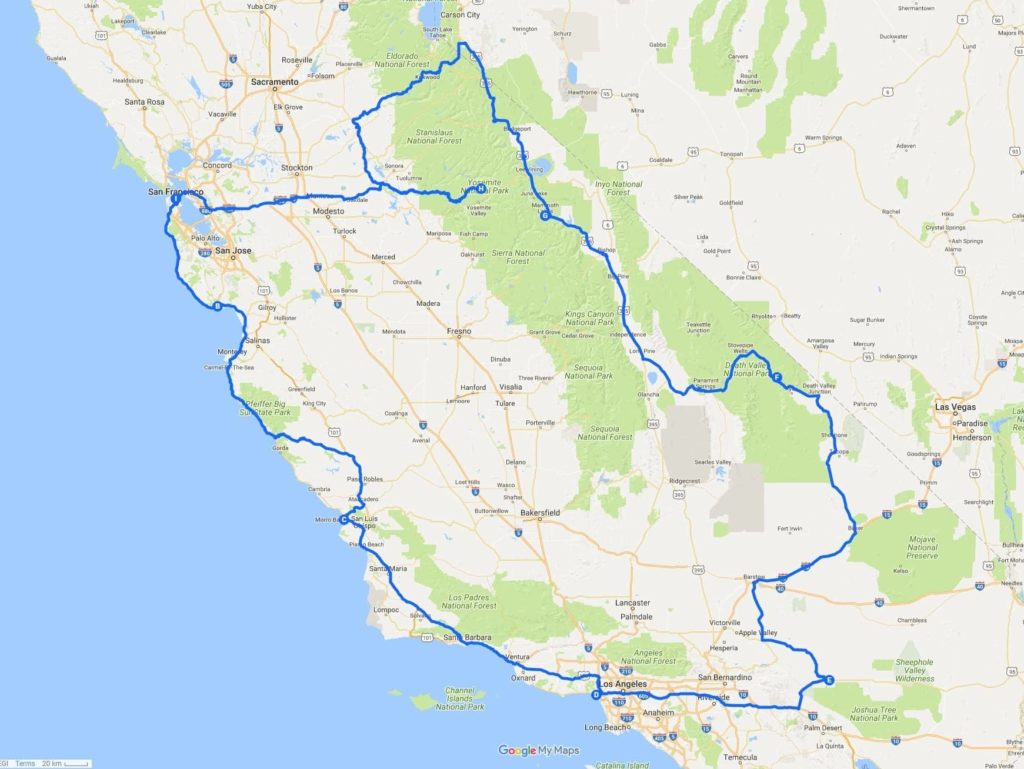
California Road Trip Itinerary Overview
- Days 1 – 3: San Francisco
- Days 4 – 5: Pacific Coast Highway
- Days 6 & 7: Los Angeles
- Day 8: Joshua Tree
- Day 9: Death Valley
- Day 10: Mammoth Lakes
- Days 11 – 13: Yosemite National Park
- Day 14: Return to San Francisco
When to Take a California Road Trip
California is a fairly good year round destination, but there are a few things to be aware of when planning your trip. In the Winter months, places like Yosemite can become accessible particularly from the east side, due to snow, as you can see in the map above.
The main road in to Yosemite is the Tioga Road, and this is usually closed from November through to May or even June. In addition, parts of the park, including Glacier Point road, are often closed for a similar timeframe.
If this happens to you, you’ll have to take a serious detour to get in based on this itinerary. A better option might be to embrace the snow, and head up to Lake Tahoe for some fantastic skiing opportunities. Or, you can head east, out to Nevada and the pleasure city of Las Vegas.
In summertime, the heat can be quite intense, in particular in places like Death Valley, where in the summer months temperatures can exceed 100F, and it’s not recommended to spend much time outside.
Where to Stay in California
California has a serious range of accommodation options to meet pretty much every budget, although larger cities and busier months do tend to increase the prices. We’d always recommend booking in advance for your trip if possible – in particular for national park campsites and hotels, and to get the best deals on city centre hotels.
For two people travelling together, you’re looking at a budget range of $60 – $150 per night for comfortable private en-suite accommodation, although you can obviously spend far more than that!
Our preferred option for hotel booking is booking.com, as they usually have the best prices, regularly run deals, and many properties offer good last minute cancellation policies. See their listings for California, San Francisco and Los Angeles to get you started.
We also use and recommend Plum Guide and Vrbo for vacation rentals.
For more ideas, take a look at our travel resources page for helpful hints and tips on getting the best deal on accommodation when you travel.
How to Get Around California
This is a road trip, so obviously you’re going to want a hire a car! We recommend searching for your car rental on Discover Cars here. They compare a range of providers so you can find the best deal for your trip.
Drivers with foreign licenses are allowed to drive, if your license is in a language other than English then you would be best with either an international drivers license, or a certified translation.
Another option of course is to hire a camper van or RV, which will let you stay in campgrounds and other, more out of the way areas. This can be a fun way to travel in a more self sufficient style. If this sounds like you, we recommend comparing RV rental prices at Motorhome Republic. They list all RVs from many of the major suppliers to help you find the right one for you. See their USA listings here.
We can also recommend checking out RVShare, who offer peer to peer campervan rental – a bit like the AirBnB of RV rental! Similar options include Outdoorsy and RVEzy.
If this is your first time in the USA, or you just want a reminder of what it’s like to drive in the USA, check out our guide to driving in the USA for lots of tips!
Practicalities for a California Road trip
Travelling in the USA is relatively easy, but we wanted to share a few things to help make planning your California road trip a little easier.
Electricity
The USA uses a 110v electrical system, with plugs that are either two pin or three pin. The holes are flat, and sometimes the two pin plug holes will be different sizes, so the plug will only go in one way.
If you’re coming from much of the rest of the world, including Europe, the UK or Asia, you will definitely need a travel adaptor like this. You will also need to check that your equipment supports the 110v supply, as much of the rest of the world uses a 220v supply.
In our experience, most electronics like laptops and phone chargers accept a universal voltage, whilst higher power devices like hairdryers do not. Always check the device itself, the voltage rating should be on your plug or adaptor somewhere.
Internet Access
Internet access is widely available across the USA in the form of WiFi, which can be found for free at most hotels, cafes, bars and restaurants. There are also a number of free WiFi hotspots in some of the cities on our list.
If your phone is unlocked you can pick up a pay as you go SIM in the USA. One of the better options is from Straight Talk, which you can buy in Walmart stores.
For more options on getting online when travelling, check out our guide to getting online when travelling to help you figure out the best options.
Currency
The USA uses the US dollar, and there are ATM’s available throughout. In our experience though, you can pay for nearly everything with a credit card, so you will rarely need cash. Whilst it is worth having a few bills on you, for the most part you won’t need them.
Instead, just make sure you have a credit or debit card that doesn’t charge you any foreign transaction fees and uses a fair price for currency conversions, and you should be good to go.
Water
Water across the USA is safe to drink, unless otherwise indicated. There are drinking fountains in the majority of public locations, and we recommend you travel with a re-usable water bottle so you can just fill it up as you go.
One thing we always love about travelling in the USA is how drinking water is always brought to your table at a restaurant – something we wish was standard around the world!
Safety
For the most part, the USA is a safe destination to travel in, and we have never had any problems. Of course, every country has crime, and areas where you would be wiser to avoid, however if you practice basic safety precautions, keep your valuables out of sight and behave as you would at home, you should be fine!
Further Reading and Resources for a California Road Trip
California is a very popular destination, so there’s no shortage of research material to help you plan your trip! Here are some of my favourite resources:
- We have a guide to things to do in San Diego
- I’ve written a guide featuring some of my top tips for driving in the USA to help get you going on the road!
- Wondering how much a California road trip will cost? Check out our guide to how much it costs to travel in the USA to help you plan your trip budget.
- Jess has a guide to driving the Pacific Coast Highway, which will give you lots of ideas for that section of the road
- If you’re interested in California’s wine country, see our guide to visiting Napa Valley
- Route 66 ends in California, so take a look at our guide to planning a route 66 trip, as well as our detailed 2 week Route 66 itinerary and 1 week Route 66 itinerary
- Fodor’s Guide to California, which also includes details on a number of fantastic road trips
- The Lonely Planet California Guide, which is great for finding things to do, places to eat and places to stay
- A US road atlas, because sometimes you don’t want to rely on GPS!
- If you’re planning on hiring an RV or camping, this guide to free and super cheap campgrounds will quickly pay for itself
- The official Visit California page, which will give you more advice on what to see and when to visit
- For more in California, see this awesome guide to places to visit in California, from fellow bloggers at yTravelBlog
- My guide to things to do in Redding California, if you decide to head to northern California
- Getting online when travelling in a foreign country can be daunting – check out our guide to getting online when travelling to help you figure out the best options for your trip
- And if you’re looking for inspiration for the rest of the USA, check out our USA section, which includes a Deep south itinerary, tips for New Orleans during Mardi Gras – and lots more!
And that sums up my perfect two week California road trip itinerary! If you’ve got any comments, suggestions or additions, do pop them in the comments below. Plus, if you liked this post, do check out the rest of my itinerary series, which will help you plan the perfect trips all around the world!
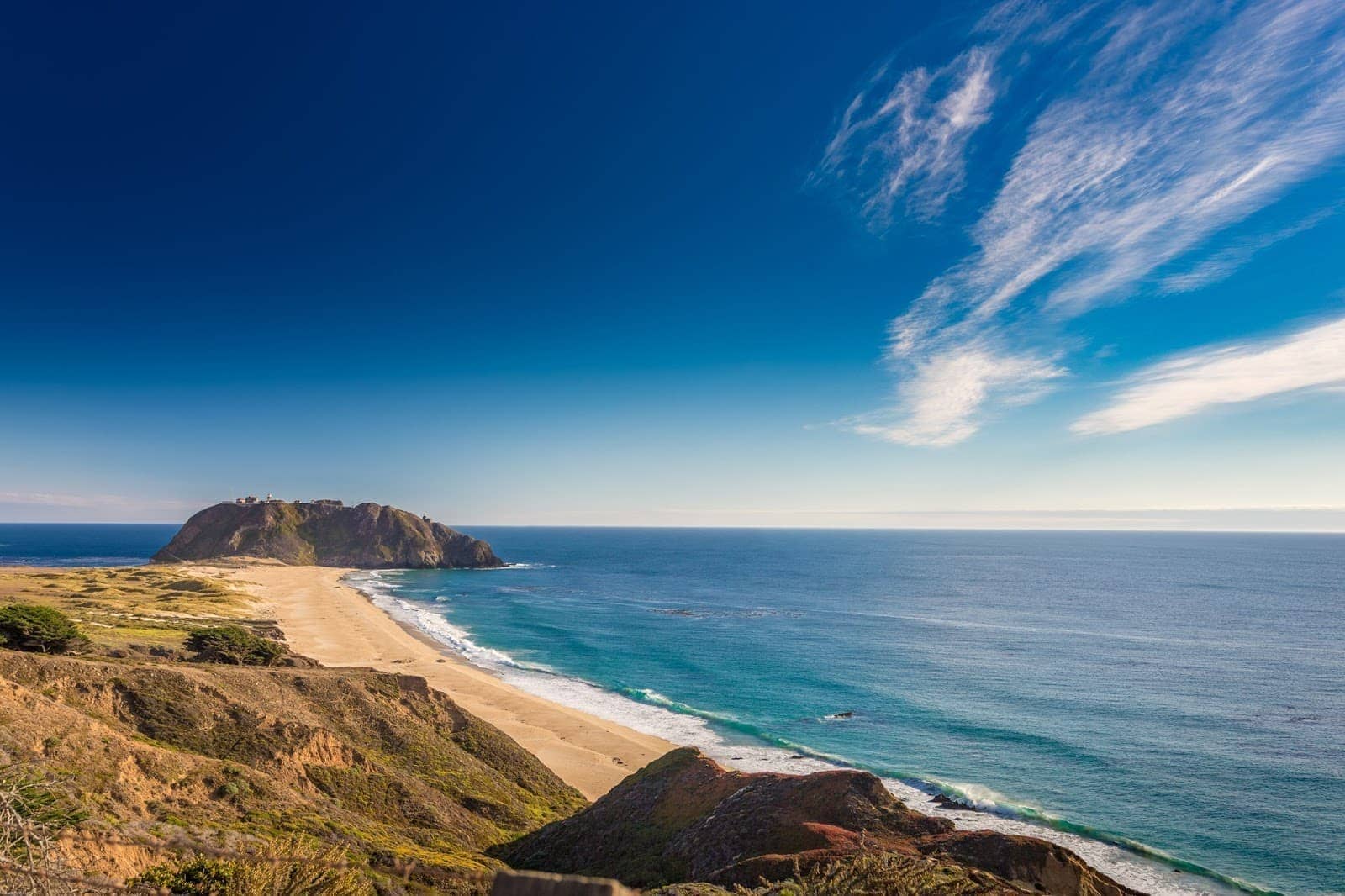

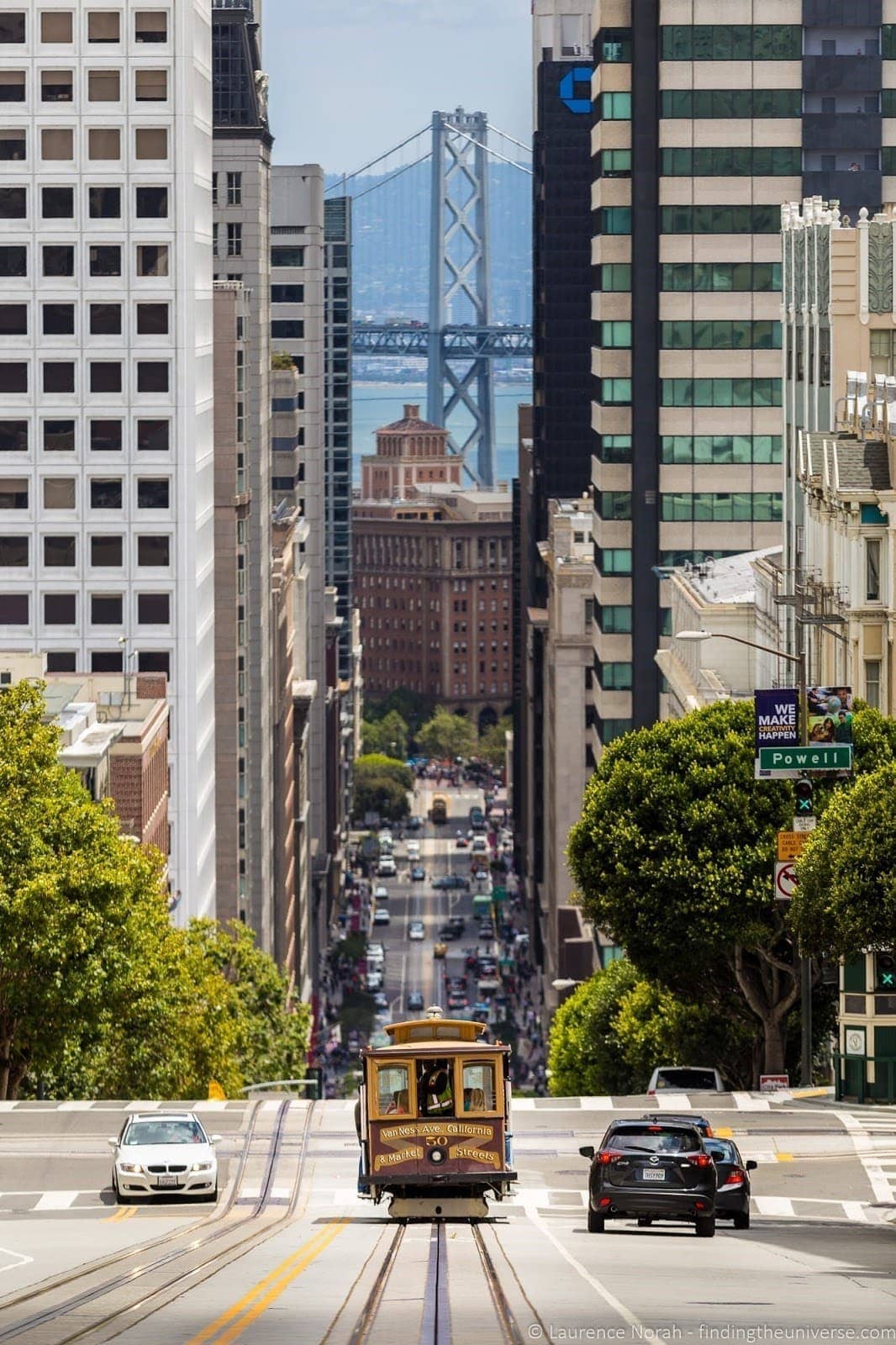
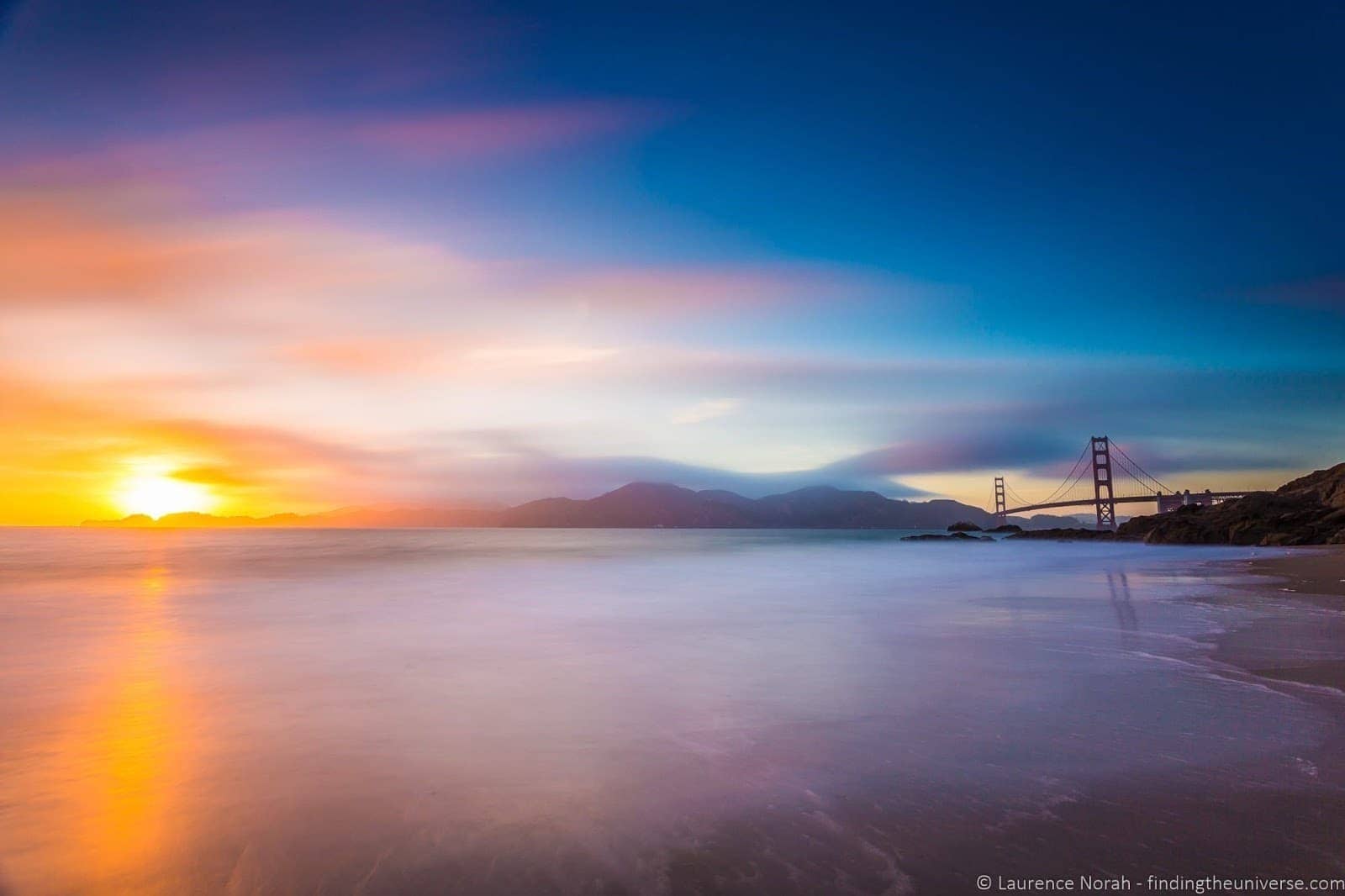
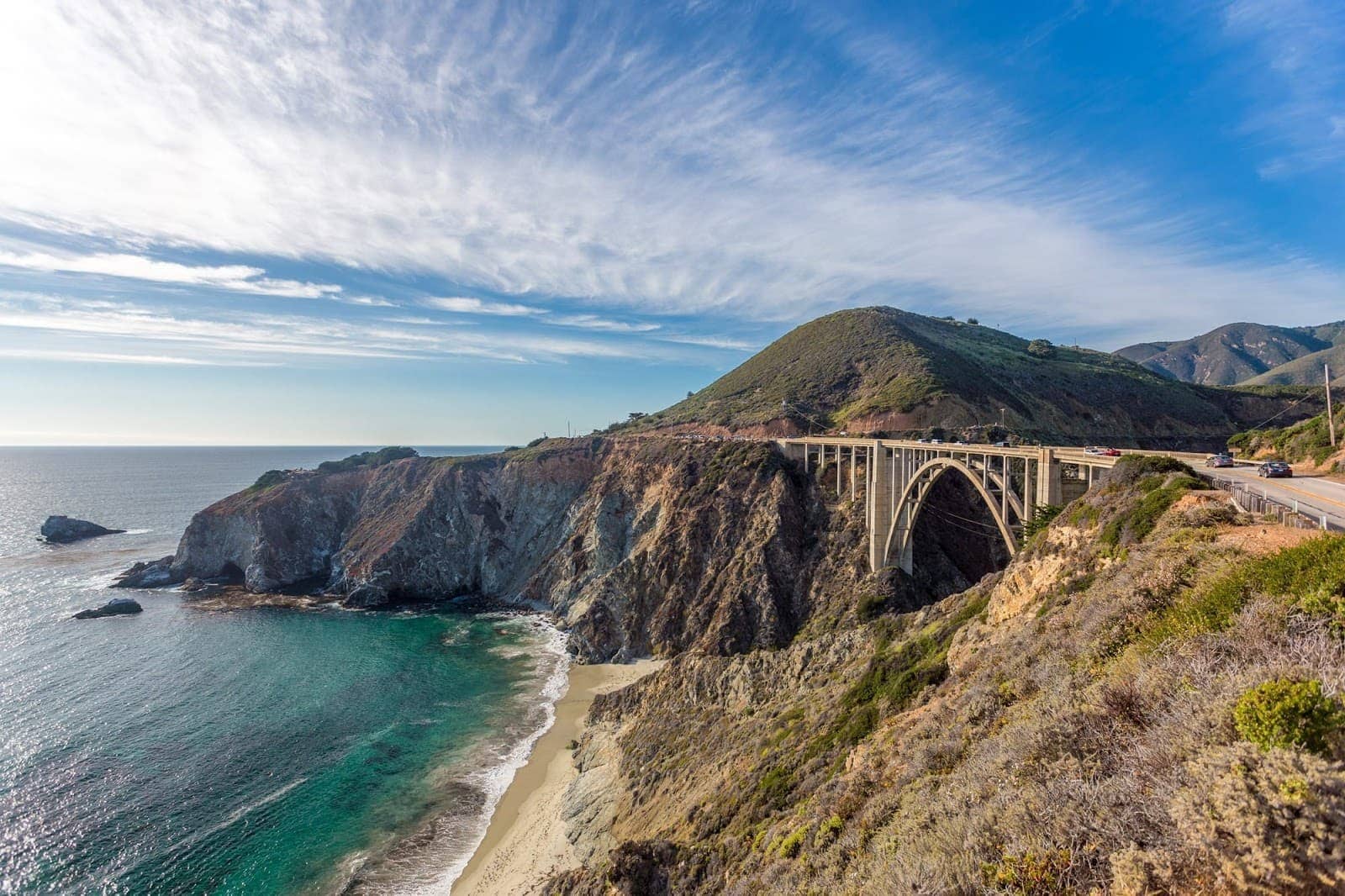
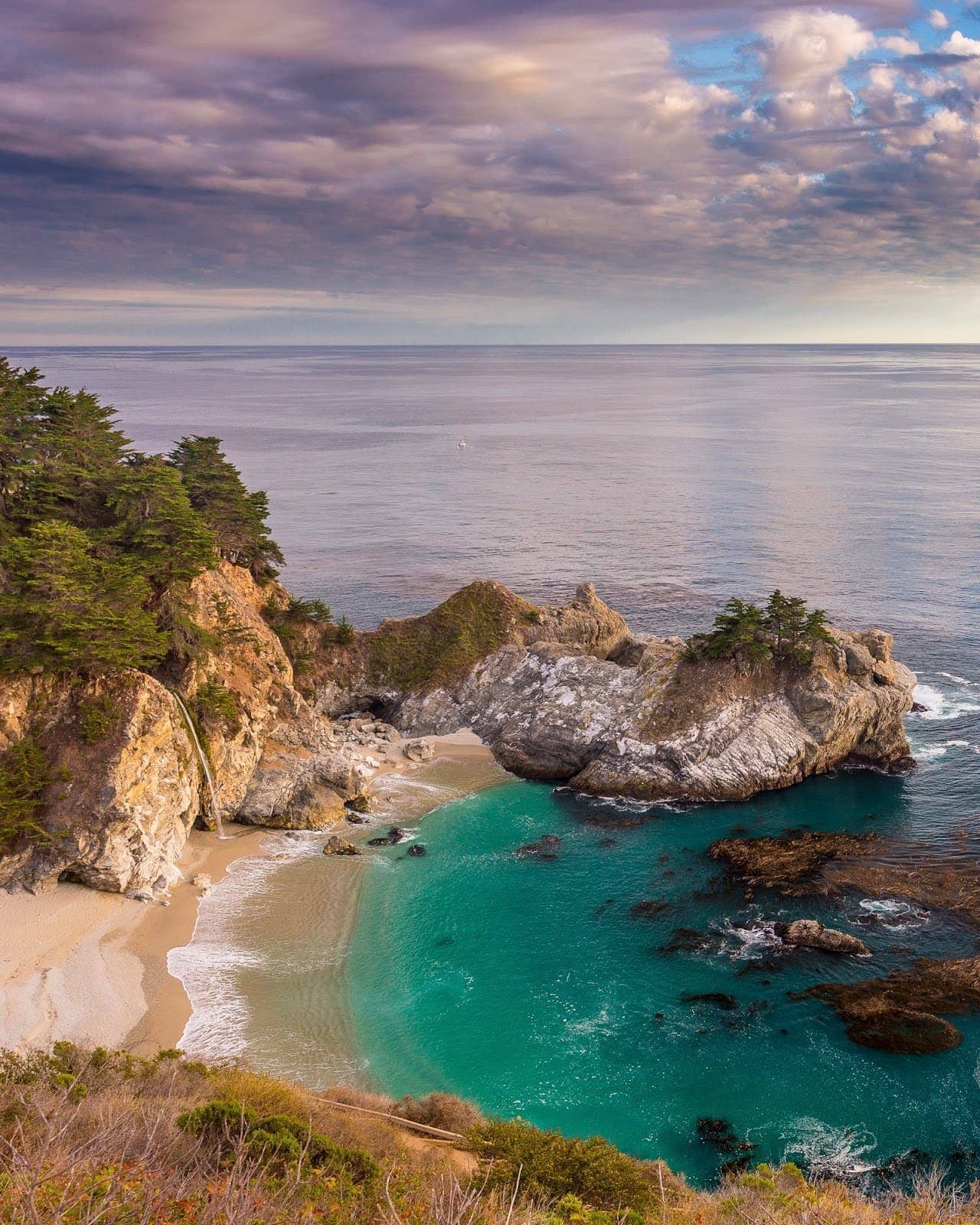
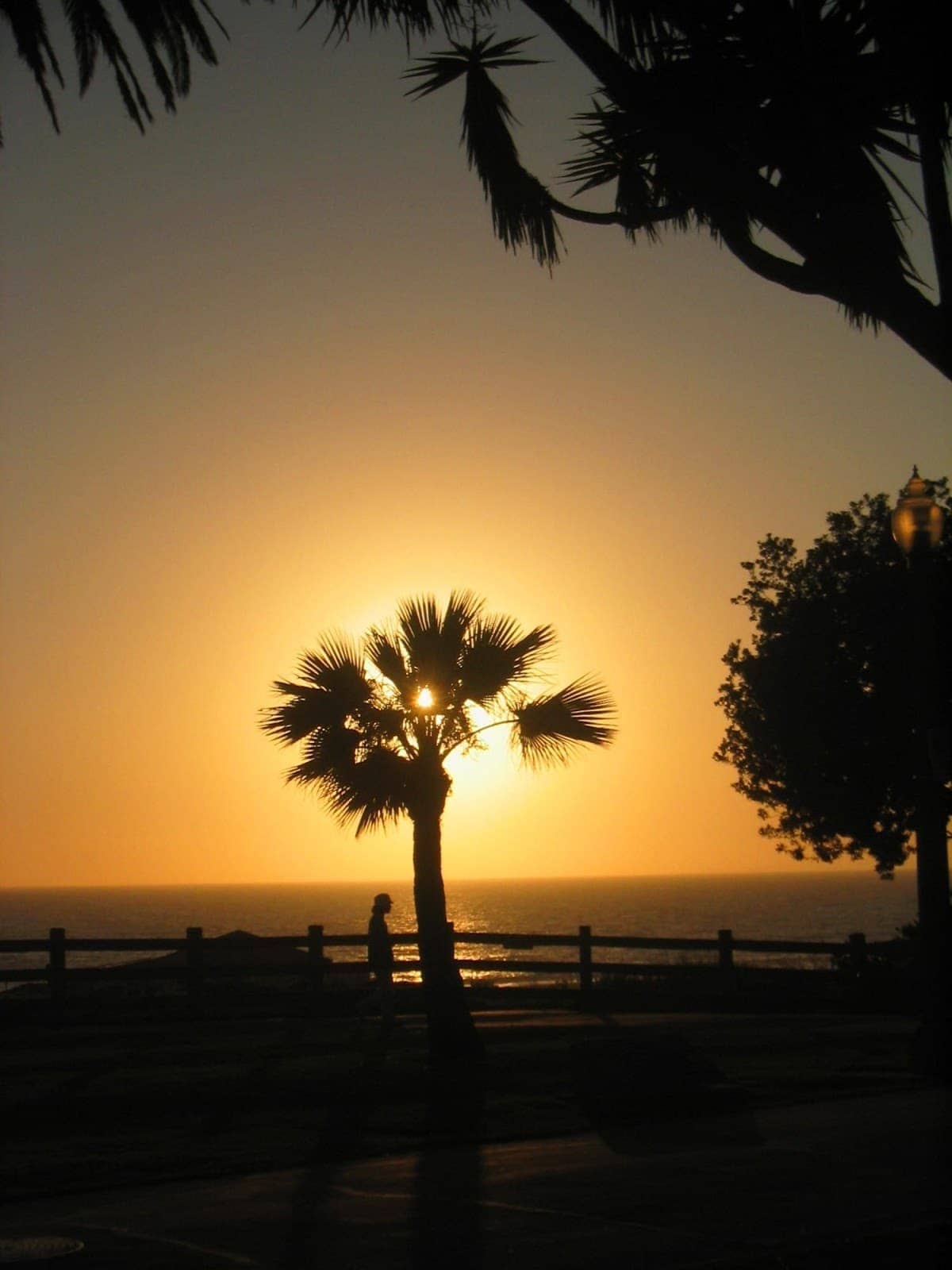
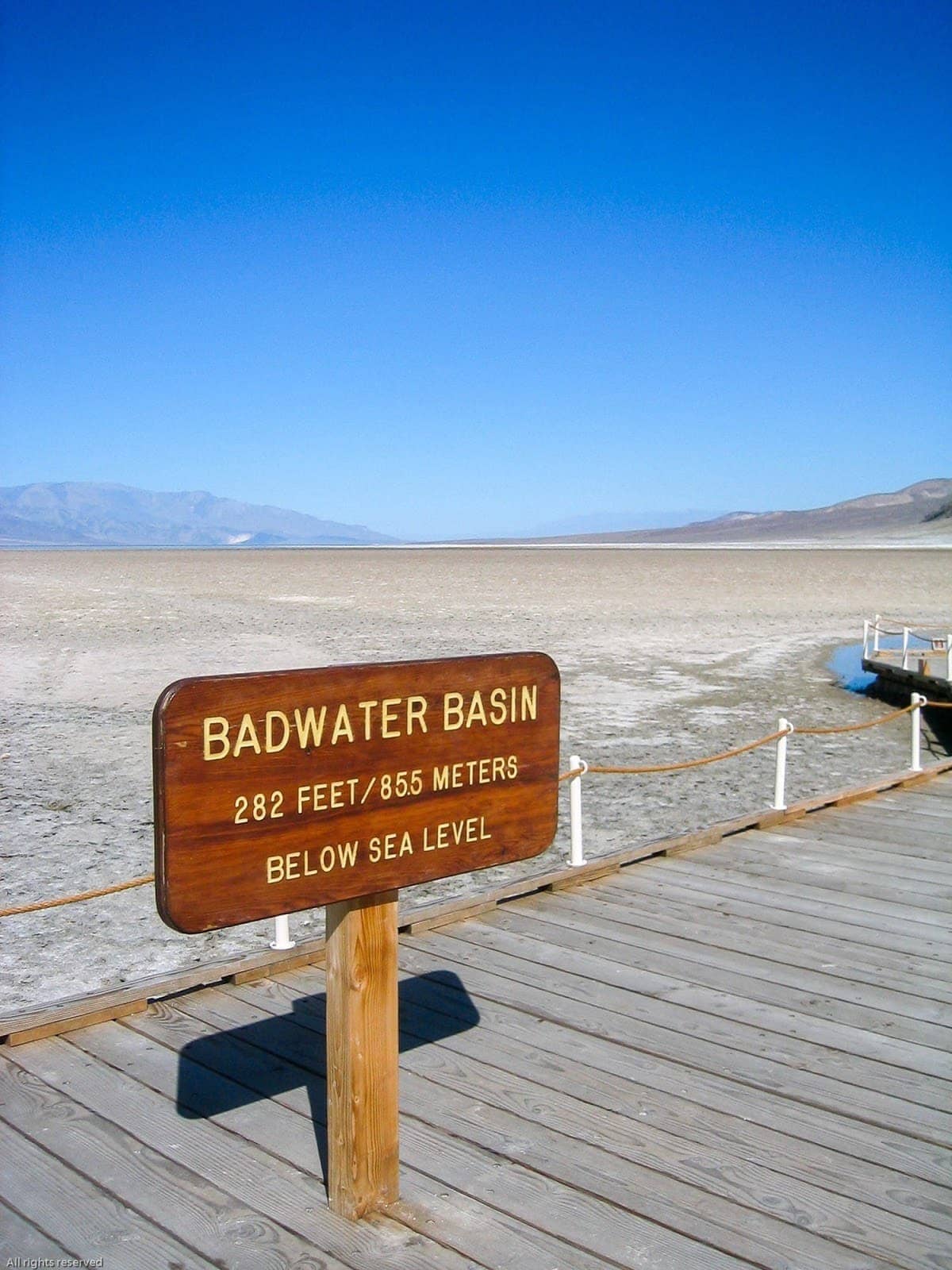
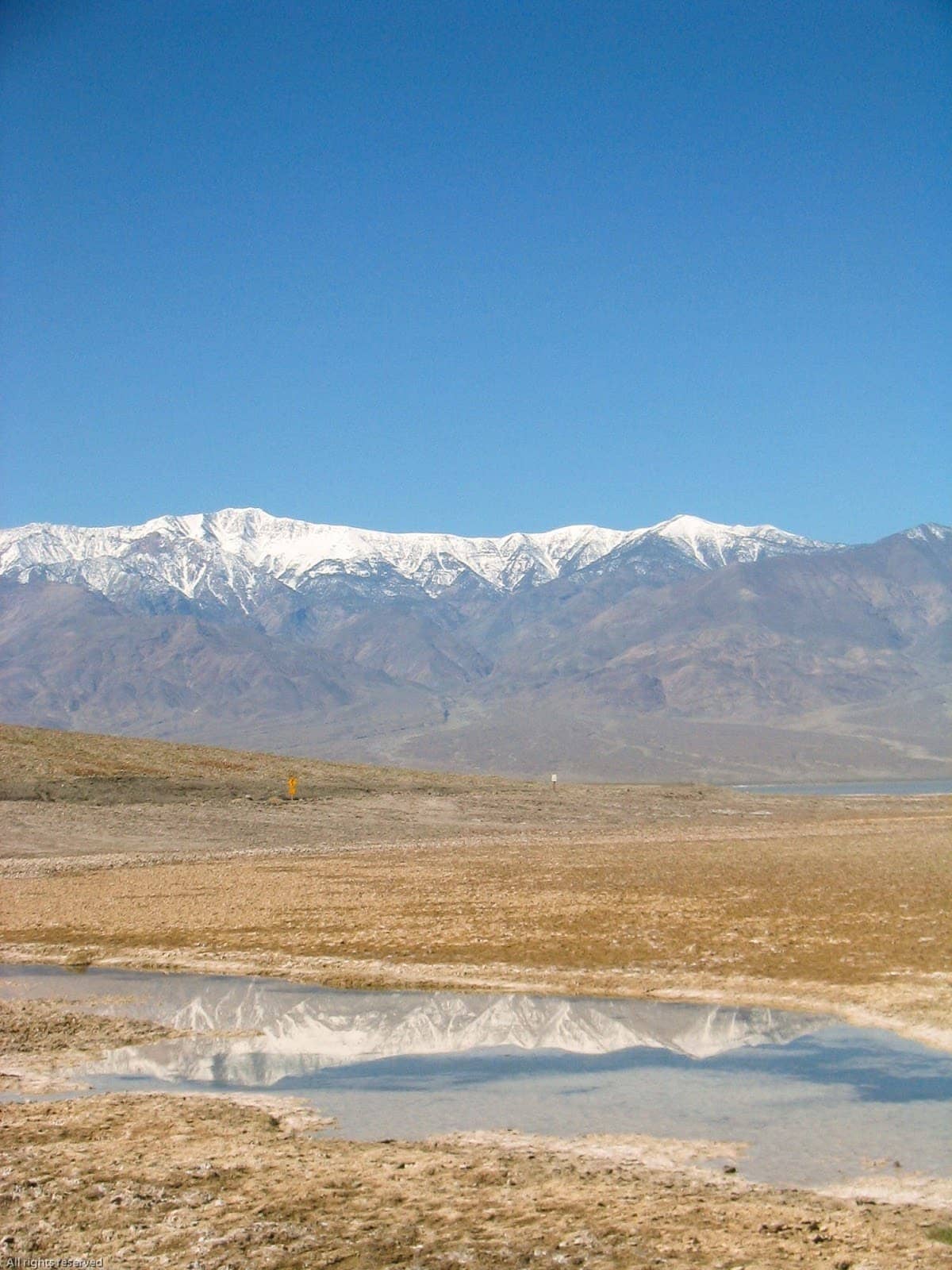
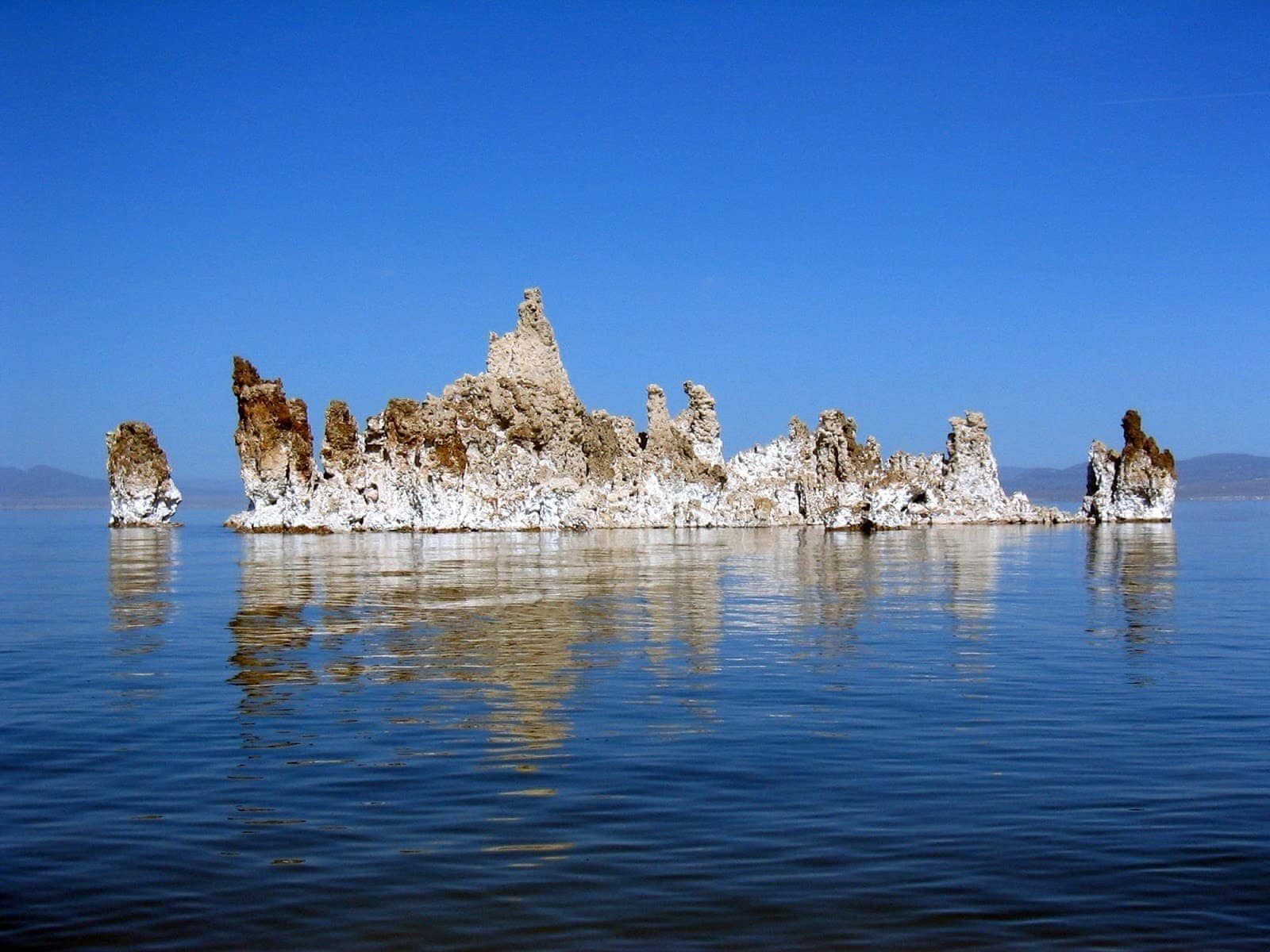
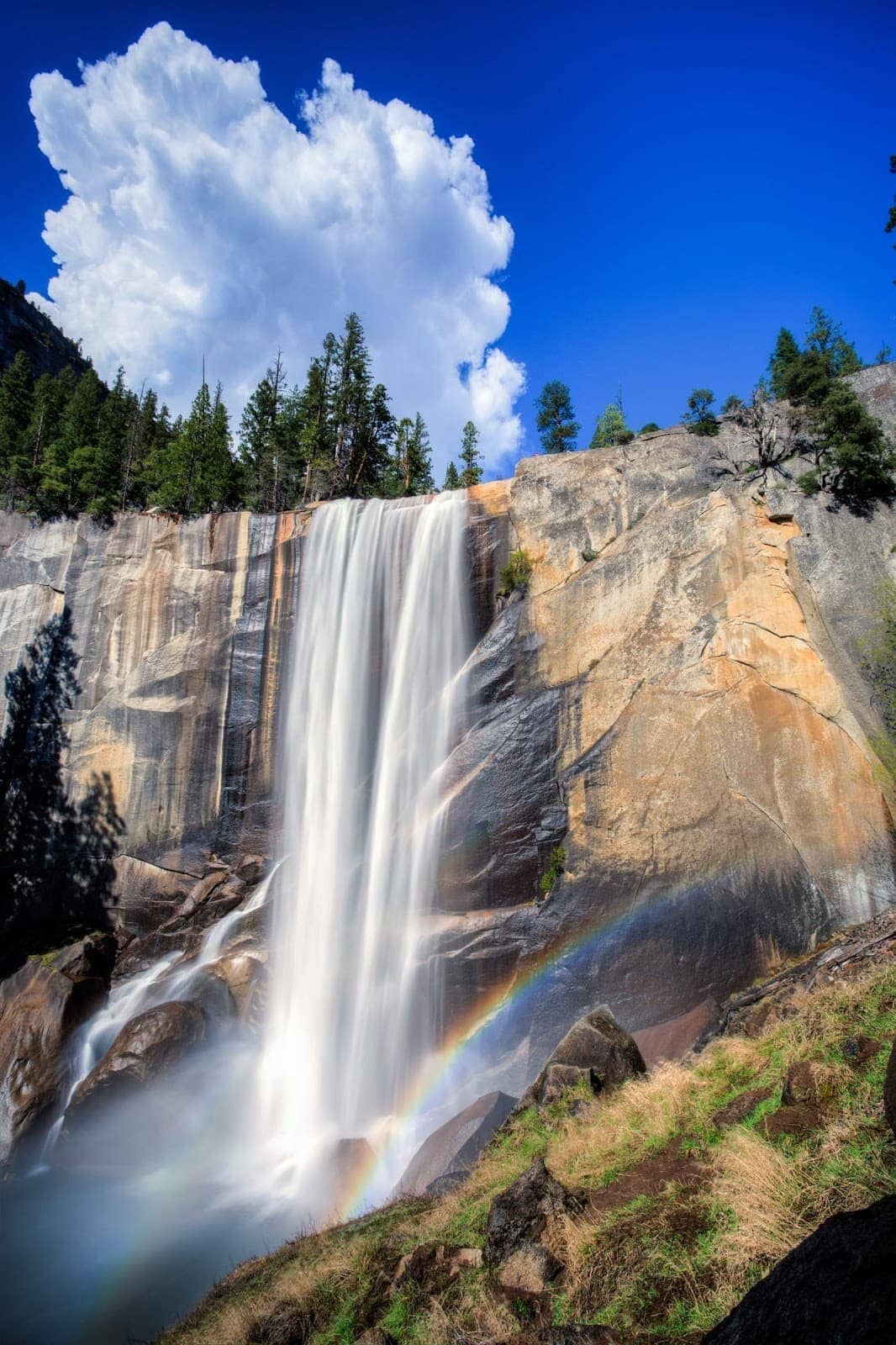
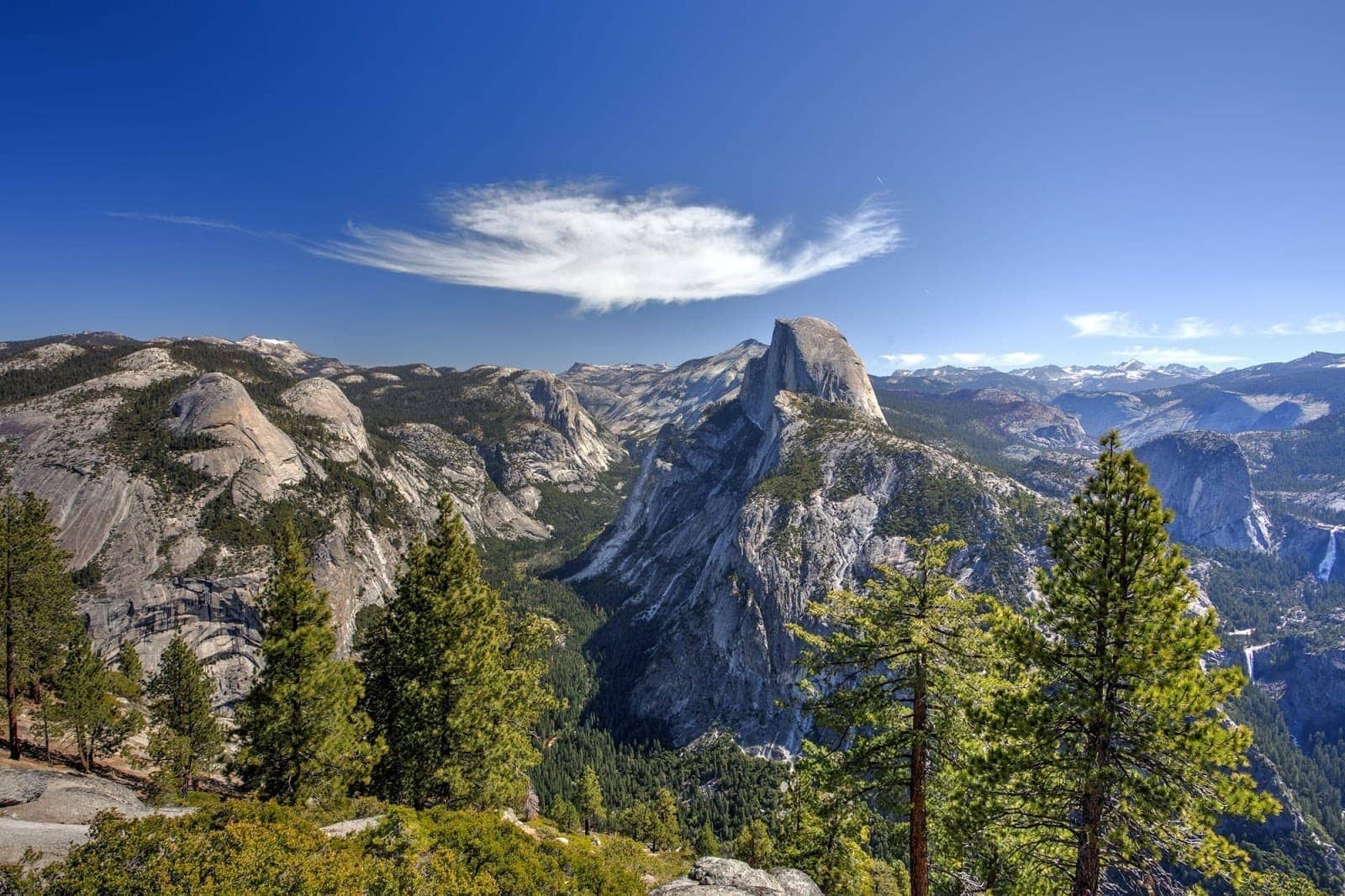
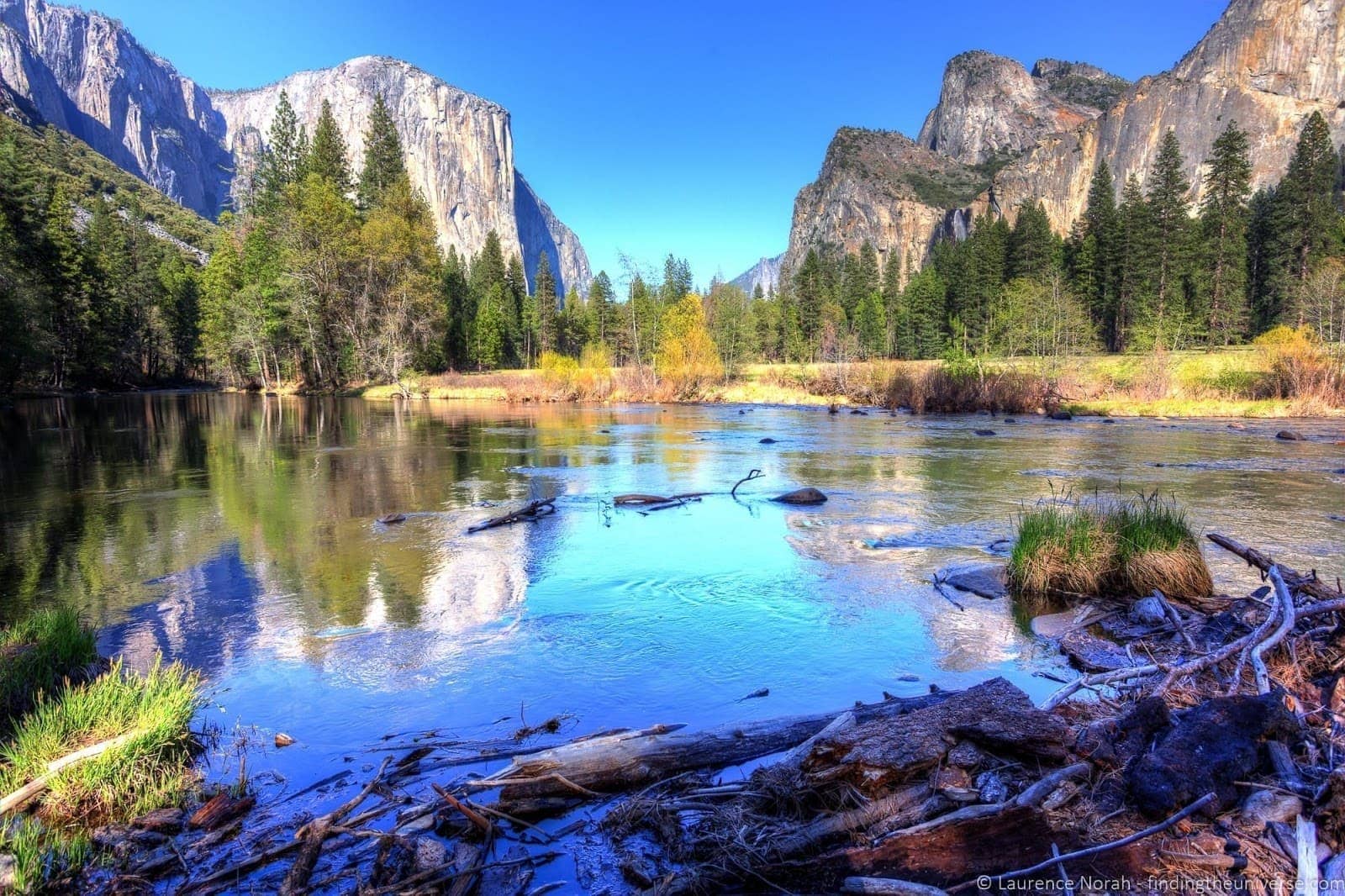
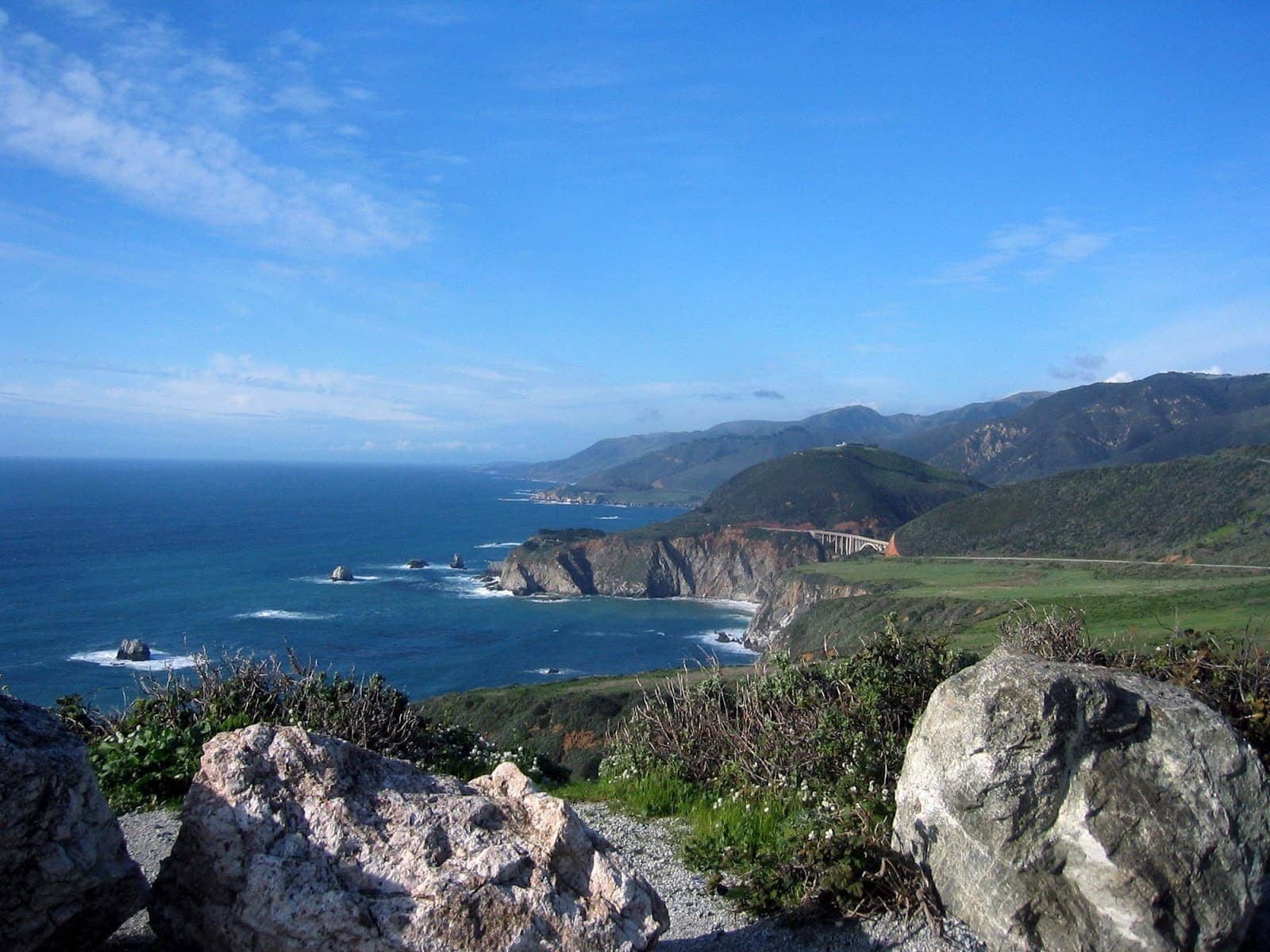
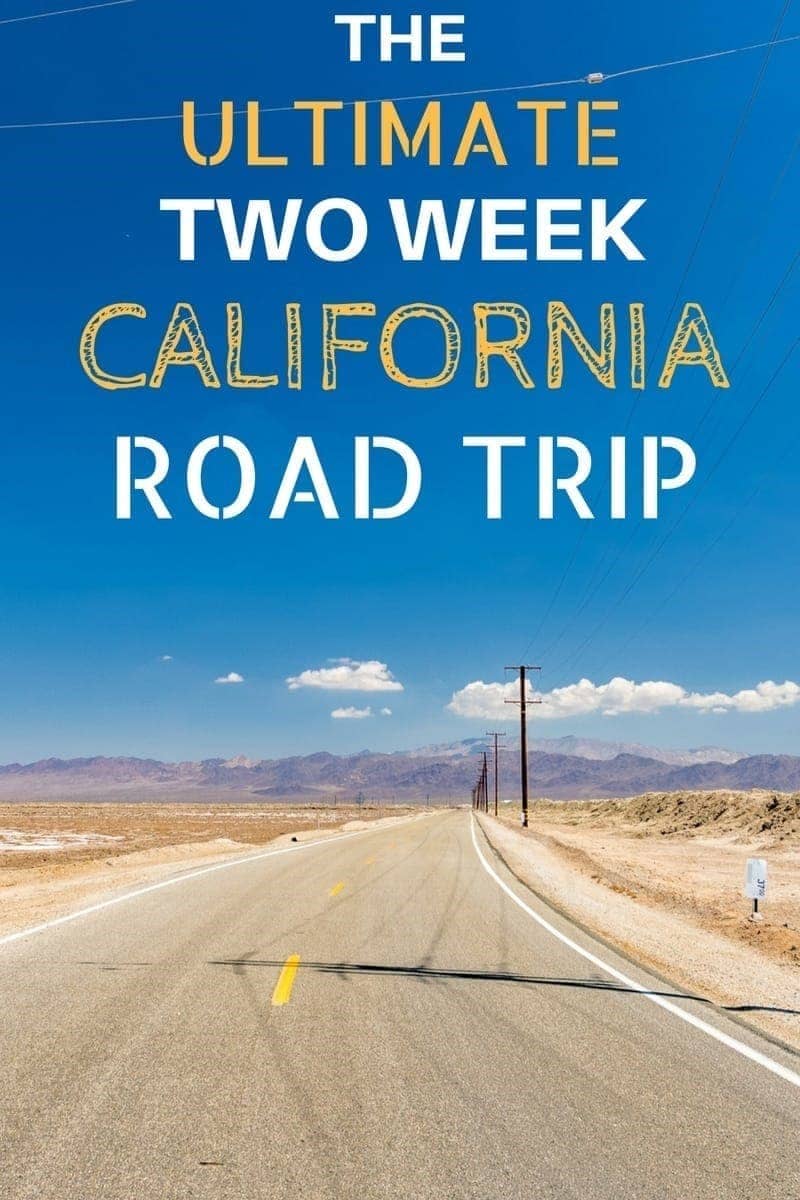
robert feinberg says
Hello,
we are planning a road trip to California in July, and using your template, but adding a few different options.
we are traveling with 2 15 year olds, and they want to surf.
any recommendations you can make on that, as well as stops that will be good for them? much appreciated.
Laurence Norah says
Hi Robert,
So there are a lot of surfing options all along the coast from San Francisco to San Diego. A lot will depend on the experience of your children and whether or not they are experienced surfers or are looking to learn. Also, some locations will have surfboard rentals wheras others are more remote. So it will depend what you need in that regard. However, there are good options all along the California coast, including Half Moon Bay, Santa Cruz, Pismo, Morro Bay, Ricon Point and Surfrider beach (Malibu). I’d just recommend doing some research to ensure you match the breaks to the skill level required 🙂
Have an awesome trip!
Laurence
Kim Dawtrey says
Hi Lawrence
We are just home after nearly three weeks in the US on a route based on your California Road Trip, although we also went to the a Grand Canyon and Las Vegas. The information within your blog was a great help in planning our trip. Unfortunately we were unable to drive down the whole Pacific Highway due to landslide near Big Sur, but we loved the 17 mile drive and would recommend staying in Pacific Grove (we stayed in Bide-A-Wee hotel which was great). We were also unable to drive across Death Valley as the NP was closed due to the damage to the roads, we did however visit Death Valley Junction and throughly recommend a visit to Amargosa Opera House. The board outside says tours at 9.00am and 6.00pm, but the young lady in the hotel reception was more than happy to give us a tour for a donation, fascinating place and history. If you haven’t visited I can send you some photos. Another side trip we did was to Bristlecone Ancient Pine Forest, amazing place, great drive up to 10,000 feet, with fresh snow at the top! The Grand Canyon and Yosemite were certainly the highlights for us.
We thoroughly enjoyed our trip, thank you for all your valuable information, if we were 40 years younger, we would love to be doing what you and Jess are doing!
Laurence Norah says
Hi Kim!
Thank you so much, I’m happy to hear you had a great trip in California and beyond! Unfortunately the Pacific Coast Highway does get blocked quite regularly due to landslides, and it also sounds like unfortunate timing with Death Valley. However I am glad to hear you still had a good time overall! We haven’t visited the Amargosa Opera House, we will definitely have to add that to the list!
Thanks for taking the time to share your experiences, and safe onward travels 🙂 Jess and I love to hear from fellow adventurers who have been out exploring!
All the best,
Laurence
erika liaci says
Hi
we are finalising our US Road trip to/from LAX in mid August. Would you recommend still going to the Death valley? I am a bit scared of the temperature which might be 50C?
Thanks
erika
Laurence Norah says
Hi Erika,
So I would personally probably skip Death Valley in August. It’s going to be too hot to do very much, and you would likely be able to better spend your time elsewhere. An extra day in Yosemite for example!
Have a great trip!
Laurence
Sam says
Hi – this 2 week California road trip looks amazing. Your blog is really helpful for planning our own trip. Would it be possible to know the driving distances between each of the places please.
Thanks
Sam
Laurence Norah says
Hi Sam, thanks very much! So I didn’t put distances because in my experience they tend to change with side trips etc. Also, the Pacific Coast Highway is regularly affected by landslips so stretches of the route can be closed.
That said, as a rough guide:
From San Francisco to Santa Monica is around 500 miles
From Santa Monica to Joshua Tree is around 150 miles
From Joshua Tree to Death Valley is around 260 miles
From Death Valley to Mammoth Lakes is around 200 miles
From Mammoth Lakes to Yosemite is normally around 75 miles but this depends on the pass being open
From Yosemite back to San Francisco is around 170 miles.
I hope this helps! Have a great time in California 🙂
Laurence
Ian says
Hi. Would you recommend Zion National Park or Bryce Canyon? We will be driving back from the South Rim of the Grand Canyon to Las Vegas and are thinking of an extended detour north rather than going back via Kingman.
Thanks
Laurence Norah says
Hi Ian,
It is with some dismay that I’m not able to accurately answer your question as both parks are still on my to-do list and I haven’t visited either. So rather than inaccurately answer your question I would have to say I don’t know. I definitely want to visit them both, and from the photos I have seen I don’t think you would be disappointed with either, but that’s about as much as I can say for now until I have visited both!
Sorry not to be of more help but I hope you have an amazing trip nonetheless!
Laurence
Maxine says
Hi
This post has been super helpful and given us great ideas for a trip we are planning with our two teenagers next summer. We want to include vegas, therefore, would you recommend that we head there after San Diego before heading back to Yosemite?
Thank you
Laurence Norah says
Hi Maxine,
Thanks very much, glad you found the post useful! So yes, heading from San Diego or Death Valley to Las Vegas would make the most sense. I’ve actually written a trip out that is similar to this one but include Vegas (and the Grand Canyon if you wanted to also include that). That’s here:
https://www.findingtheuniverse.com/2-week-usa-road-trip-itinerary/
You can save time of course by skipping the Grand Canyon 🙂 Let me know if you have any more questions, I’m happy to help. Otherwise, have a great trip!
Laurence
William D Villont says
My wife and I took a California trip similar to this one except we went south to San Diego as our final destination. I really enjoyed the trip and can fully understand why you highlight this trip as one someone should surely take. We agree. My only disappointment of the trip is that, at the time, I was doing videography and that is all I took on the trip, my video camera. Now that I have gotten back into photography I wish I had taken my camera as well. We rarely get out the old video (VHS tape) and watch and I have not taken the time to transfer the VHS to DVD yet. I just gave it away, that this trip was sometime ago because I was shooting VHS. Anyway I would love to take this trip again and if this Covid thing ever goes away, maybe I will. Thanks for sharing this trip.
Laurence Norah says
Hi William,
I’m glad to bring back positive memories of your California trip! Interesting to hear you mostly took video. I have a similar reverse quandry when I travel, I usually only find myself able to concentrate on one medium of story telling as we go, so I focus on photos. But I often think it might be nice to have more videos. I hope you get to watch your video soon and also to take the trip again one day!
Have a lovely and safe 2022,
Laurence
Delaney Blute says
Hi! Thank you so much for the wonderful travel recommendations. I’m planning on taking this trip with my mother and sister, possibly leaving next late summer. Do you have a ball park recommendation for price for the entire trip for 3 people? We plan on budgeting it, but just wanted to know if you had any estimate of what this trip would cost for 3 people. Thanks so much!
Laurence Norah says
Hi Delaney,
This is a great question. So it’s really hard to give a price estimate because everyone has a different travel style, and it will depend on what type of accommodation you are thinking of booking, whether you are happy to share a room for the three of you vs have individual rooms, whether you are ok with budget dining vs more expensive options and so on. I’m also not sure if you’re from the US or not, so car rental if you need to rent a car would also be a cost to consider.
I do have a guide which has a ballpark idea of costs for travel in the UK, which you can see here: https://www.findingtheuniverse.com/how-much-does-it-cost-to-travel-in-usa/
That should give you an idea of how much each element of the trip should cost you, to help you come up with a rough figure. The main costs are going to be your accommodation, gas / car rental / car parking in cities, food, and any attraction entry.
I hope this helps! Let me know if I can provide any further input, and have a great trip 🙂
Laurence
Chantelle says
Hello,
We have a trip booked for just short of a month in September! Your blog was really helpful, thank you!
I was wondering if you had some advice on Car vrs Camper. Is it easy to find places to stay in a camper or would you recommend a car and motels. We are happy either way just want our trip to be as stress free as possible!
Laurence Norah says
Hi Chantelle!
So we have done both, and honestly, we prefer motels / B&Bs to campsites.
In the USA, campsites are a bit different to the UK in my experience. They tend to have more formal “sites” for each visitor, which means they can’t just squeeze another person in. When they are full they’re full. For National Parks especially, this means that they can book out and then you can be stuck trying to find somewhere to stay. You can of course book them in advance, so that’s an option. The other good news is that if you have a campervan all is not lost as there are places you can camp for free. However these tend not to be totally exciting, Walmart carparks for example let folks stay overnight, but this might not be the dream option.
The other thing is that if you do the math, you will find that the cost of renting a campervan + the cost of paying campsite fees will probably be a lot more than the cost of a cheap car and economy lodging. Plus if you plan on visiting a few of the cities in this itinerary a camper will be more effort than it’s worth. You didn’t mention budget so this might not be a huge factor, but I just wanted to highlight it.
I think you can see where my preference lies for this itinerary. Obviously if you love camping and want to spend more time out in the backcountry and national parks, it’s a great option. But you might find that buying a cheap tent and a couple of sleeping bags for a few nights is a better option than renting a camper 🙂
Have a great trip – let me know how it goes and what you decide to do! We have a facebook group you’re welcome to share your experiences in here: https://www.facebook.com/groups/travelloversandphotography/
Laurence
chantelle sims says
This has been so incredibly helpful thankyou!!
Laurence Norah says
My pleasure Chantelle – have a great trip!
Sharon says
Great inspiration and ideas, thanks
Laurence Norah says
Our pleasure Sharon, thanks for stopping by and commenting!
Thiago says
Just want to thank you for these super detailed guides, guys;
Laurence Norah says
Our pleasure Thiago, if you have any questions we’re happy to help 🙂 Safe travels!
Laurence
Kathy Reed says
Hi – this was an amazing find! Loved all of your recommendations. Do you have any recommendations for anything just a little further north into the Redwoods. Perhaps starting in Santa Monica and going north? Though i do love the loop feature of this itinerary. Makes it so hard to decide.
Thanks!
Laurence Norah says
Hi Kathy,
We have travelled north of this itinerary as well, with our highlights including Napa Valley, Point Reyes National Park and Redding, however we’ve not put together a detailed itinerary for this sort of trip as we’ve not covered the area in enough detail. If redwoods are what you are after particularly, then on this itinerary you can see them near Santa Cruz, if you did want to follow it.
Let me know if I can offer any more advice for your trip!
Best
Laurence
Barry says
Hi
Great site for info ?
Just would like to know what time of year would you recommend doing this road trip ive just read on here ,we’re coming from the UK so any info will help us plan
Many thanks
Barry
Laurence Norah says
Hi Barry!
It can definitely be done at any time of year, but I might avoid the depths of winter as snow can make the roads into Yosemite a challenge, plus it will be quite cold. So if you are looking for more of a summery California road trip, I might suggest May through September. We just toured California in August, and it was definitely very hot inland, as well as being busy so perhaps May/June or September would be the best time for a good combination of weather and fewer people 🙂
Have a great trip!
Laurence
Debbie says
Hi
We are planning this trip in April 2020! We will skip LA (Not interested) & Yosemite (We’ve already been) & we will only spend 1 day in San Francisco (we’ve already been) my question is do you think we can do the rest in 7 days?? We definitely want to do the scenic drive from San Francisco to San Diego & back to San Fran an thank you for all the wonderful information!!
Laurence Norah says
Hey Debbie!
Awesome 😀 So you can do the Pacific Coast Highway from SF to San Diego in a couple of days if you don’t mind going at a bit of a pace. I’d probably slow it down to 3 days though. I’m not sure if you still plan on seeing Joshua Tree and Death Valley – if you plan on going up and down the Pacific Coast Highway both ways, then you’re actually going to end up driving much more than this itinerary if you do visit Death Valley, as you’ll do about 2/3rds of the route and then turn around.
I’m not sure if you wanted to go to Las Vegas instead, but what you could do instead of going all the way back is finish in Vegas. I have noticed that many car hire firms don’t charge one way fees for trips between SF and Las Vegas, and flights out of Las Vegas are also very inexpensive. Even if you don’t want to do the whole Las Vegas thing, there are some lovely outdoor attractions in the area including the Hoover Dam and the spectacular valley of fire state park.
Anyway, just a thought. To answer your question – yes, you could do the rest in 7 days but I fear it might be a bit rushed,
Have a great trip!
Laurence
Josh says
Hey,
How many miles is this trip in total?
thanks!
Laurence Norah says
Hey Josh!
Around 1400 miles, but you’ll want to add on detours, side trips etc. So I’d say 1500 – 2000 to be on the safe side 🙂
Laurence
Mallikarjun says
Hello,
Nice blog!
Can you please let me know the “Public Transport” options, it may be Bus, Metro or any other services in Los Angeles, San Francisco, San Diego. I am planning for a trip in end of Jan 2020 for about 6 to 7 days to cover these cities.
Or is there any travel packages you suggest for these cities. Please let me know.
Thanks,
Malli
Laurence Norah says
Hi Malli,
My pleasure, and apologies for the slow response, I’ve had some site issues I’ve been working on.
For your question, are you looking for public transport between the cities, or in the cities? If the former, then I’d generally recommend the long distance bus as the best way to get between the cities in California, although you will struggle to get to more remote locations this way.
For each city you mention, there are different options. San Francisco is the easiest to get around, as there’s a great bus system as well as bikes, e-bikes and scooters. LA is a bit trickier – there are both buses and a metro, but just be aware that the distances can be quite far as the city is very spread out. So the best option is to figure out what you want to see and make sure the accommodation you pick is as close to the sights as possible.
San Diego is also easy to get around for the most part, with buses, trolleys and trains.
I hope this helps 🙂
Have a great trip!
Laurence
Samantha says
Hi! this sounds amazing and I am literally looking at booking this for June next year! From looking about the only area that I am a bit unsure of is Death Valley – where is best to stay around there and if only doing a day – what would be the best suggestion of something to do? I am also thinking that we will add 1 day on to do a Vegas stay since its so close!
Laurence Norah says
Hi Samantha,
So when we visited we stayed just outside the valley at Panamint Springs – specifically we stayed here.
A day is enough to see the highlights of Death Valley. You’ll want to visit Badwater Basin of course, the lowest point in North America. Other highlights including the Mesquite Sand dunes, Zabriskie Point, the Devil’s Golf Course, the Artists Drive and Palette and Mosaic Canyon.
We can definitely recommend tacking on a trip to Vegas as well. We’re actually thinking of publishing a new itinerary in the coming months which includes Vegas, as it’s a popular addition 🙂
Have a great trip!
Laurence
Gisele leduc says
Would like to know w ymt is there a bus trip to 14 days in calif. Where does the bus leave from in the US. And approx how much is the cost
Laurence Norah says
Hi Gisele,
Sorry, could you clarify? Are you looking for a tour of California?
Thanks!
Laurence
Gisele leduc says
Looking for next year we live in Ottawa Canada and would like to take a 14 day bus tour especially san Francesco and pacific route. Are there bus tours leaving let’s say from Buffalo, New York we can easily drive to these destinations. I meant leaving from New York City and
Buffalo. What would be the cost and does it include meals. Thank u
Gisele Leduv says
Hi I would like to know if there are Any bus tours leaving from New York City or buffalo 14 day road trip to California especially the pacific coastland. What would be the cost for such a trip.
Laurence Norah says
Hey Gisele,
I have looked but most tours that depart from New York and go to California are much longer, because the distance is so great from the east coast to the west coast. If you want a tour that focuses more on California, it would definitely be easier to get one that departs from San Francisco or Las Vegas rather than New York – is that a possibility?
Laurence
vivianchoo says
Good articles and good photos, Helps a lot. Thank you!
Laurence Norah says
My pleasure – have a great trip!
Jason Parsons says
This is a super inspiring blog. Which area did you stay in Yosemite? We are planning to complete our road trip with 3 nights in Yosemite. We will have a car and plan on day trip walks within the park.using a hotel or lodge as our base.
Laurence Norah says
Hi Jason
Thanks very much! In Yosemite we’ve stayed in a few places. On the trip with the photos in this post, we stayed in Curry Village, which were canvas tents (https://www.nationalparkreservations.com/lodge/yosemite-curry-village/).
Jess has also stayed at the Wawona hotel, and the other lodge options are The Ahwahnee Hotel and the Yosemite Valley Lodge. I would definitely recommend staying with the park if you can as it makes it a lot easier to see everything within a short distance. The various options are at different price points though, so you’ll have to figure out which is best for you 🙂
Have an amazing trip!
Laurence
julie morton says
Great article, thank you. I will be doing a similar route with my husband in September. Do you have any further guides on the Mammoth Lakes area or could you suggest somewhere to base ourselves there for a couple of nights please? We will be coming from Death Valley and then heading on to Yosemite.
Laurence Norah says
Hi Julie! We don’t have anything else about Mammoth Lakes unfortunately on our blogs. We have guides to other parts of California, including Yosemite, but Mammoth Lakes is still on the to do list.
Have a great trip, sorry we couldn’t help this time!
Laurence
Tara West says
Hi there,
Just found your blog. Really helpful. Thank you. We are thinking of doing a Californian road trip with our 5 month old baby in Sept. How long are the drives between the places you mention? I wouldnt want to do LA so would probably do San Diego instead. Is there anywhere you advise missing out with a baby?
Thanks so much.
Tara
Laurence Norah says
Hi Tara!
Our pleasure, we’re delighted to be able to help 🙂
So the drives will obviously vary depending on what you stop and see, but none of the days on the itinerary should have more than four hours driving. We’ve also not got any personal experience with traveling with a baby, however, just bear in mind that even in September Death Valley is going to be very hot. Other than that I don’t see a reason not to go to any of the locations on the list, and Death Valley will be manageable, just take care with the heat 🙂
Enjoy!
Laurence
Priya Singh says
I really appreciate the work you have done, you explained everything in such an amazing and simple way.Good post. I was searched for this topic. Finally, I got the information on this blog. Thanks for the effective information.
Laurence Norah says
Thanks Priya – pleased we were able to help! Have a great trip 🙂
Rafael says
Hi guys, great post. I found it really handy now as i’m planning a 3 week road trip through California (and Nevada) in a month (apr 6 to 27). We are starting in LA, just a few days and then planning to go to Joshua Tree (Mojave, is it worth it?), Las vegas, Grand Canyon, Death Valley, Yosemite, San Francisco, and Route 1 back to LA. It’s quite a lot of days, and i find hard to plan where to sleep every night, as i’m not sure how long would it take me to visit every national park, and even cities. So my question is, should i book in advance all different accomodation? In that case how many days should we give to the different national parks and places. As the trip gets so long, we are being really careful with our budget, and that takes me to the second question, what are the best places to stay on a budget in the different stops?
By the way, we are a group of four, planning to rent a car.
Thanks again for your post. Looking forward to read your answer!
Rafael from Uruguay
Laurence Norah says
Hi Rafael!
Thanks very much 🙂
So to answer your questions. I think Mojave is worth it if you like deserts and wide open spaces.
In terms of accommodation, you are not travelling at a very busy time of year, although it is easter towards the end of April. However there are no Federal holiday, so it should not be too busy. So this means you should be able to book quite last minute. The only places I would advise maybe booking in advance would be any national parks you want to stay in, which can be busy year round. So Yosemite, Grand Canyon and Death Valley, if you plan on staying inside the park, you will want to plan your accommodation in advance.
In terms of budget accommodation, the parks all have campsites, so that would likely be the cheapest option if you don’t mind camping. Some have existing tents you can hire if you don’t want to bring your own tent – Yosemite for example has some nice fixed tents which are not too expensive. For other cities, I’d advise looking at the budget motel chains like Motel 6, Red Roof Inn and so on. These can be very cheap, but do be aware they are not always very central. So you might find something like AirBnB to be more cost effective.
As you are visiting a number of parks you will probably want to buy a national parks pass, which will save you money on parks entry.
I’d also advise taking a look at my guide to how much it costs to travel in the USA, which should give you some more budgeting ideas 🙂
https://www.findingtheuniverse.com/how-much-does-it-cost-to-travel-in-usa/
Let me know if you have any more questions!
Laurence
c. m. crawford says
I would take extra care with possessions in the big cities in California. I left my purse in the back of my rental car, parked in a highly visible location on a beach in San Francisco, and even though there were people walking up and down the beach, the window was smashed and the purse stolen. Luckily wallet & phone were on me and the purse was even found and turned in to the police, but I had to exchange the rental car. Other than that California is awesome.
Laurence Norah says
Sorry to hear that Cris! This is definitely an issue around the world, we always recommend not leaving any valuables in sight in a car as it makes for a tempting option for a thief 🙁 Glad to hear you got your purse back though!
Matthias says
Hey you guys!
You have a great blog and this post inspired the route for my first trip to California with a buddy (we’re planning on doing pretty much the same route). But our plan is doing it the other way around: Also starting end ending in SF but heading to Yosemite from there and doing the trip clockwise. Would love to hear your thoughts on that idea 🙂
Laurence Norah says
Hi Matthias!
The route would work either way. The only thing is that many people prefer to drive the PCH from north to south as you are on the right hand side of the road, so you get clearer views. But it’s stunning either way to be honest 🙂
Have a great trip!
Laurence
Catherine Smithfield says
Hi Laurence,
Fabulous site guys… I would love some tips please my husband and I are planning a once in a lifetime trip to the USA, we fly into and out of Los Angeles , arriving 16th October and leaving 5th December. We will be spending thanksgiving with friends in Washington state . We would like to drive the Pacific highway, see some of LA, San Fran , Yosemite,Death Valley Las Vegas,- just very quick as we feel we should see it and the Grand Canyon . We love nature, beautiful landscapes, we are also foodies .
Any suggestions would be very welcome , hire car v Rv , obviously due to the length of our trip I would like to be sensible on accommodation costs…is there a reliable decent hotel/motel chain you would recommend, or Airbnb. I have also been looking a5 the trusted Housesitters website but have recently come across a few very negative reviews .
Many thanks catherine(UK)
Laurence Norah says
Hi Catherine!
Thanks so much! We’ll do our best to help out.
So first of all, if you haven’t already, we can definitely recommend checking out the USA sections of both our websites:
https://www.findingtheuniverse.com/category/destinations/north-america/usa/
https://independenttravelcats.com/category/travel-destinations/united-states/
Where we have loads of posts that you will find useful. Most particularly, I’d advise reading our driving in the USA, and our guide to how much it costs to travel in the USA. That latter one in particular will help you in terms of costing out the trip.
For a hire car, a normal car rental is going to be a lot cheaper than an RV, especially as you will most likely still have to rent campsite space to stay at. A standard hire car in the US will usually start at around $200 a week. Our US travel budget post has a lot more on how to find the best deal and things to watch out for.
In terms of accommodation, the US has a wide range of options. The cheaper chains include: Red Roof Inn, Motel 6, Super 8, America’s Best Value Inn, Travelodge. The next step up would be Comfort Inn and Holiday Inn.
Note that the cheaper hotels are often found a little way outside of towns, often at interstate exit ramps. It’s also worth being aware that they are nearly all franchises, and so as a result the quality can vary dramatically, so it’s always worth reading reviews before visiting.
For booking and reviews, we highly recommend Booking.com. We have nearly always found this to be the cheapest option, even compared to turning up at the property, and the reviews can be a helpful guide. However, just bear in mind that cheaper hotels tend to rate worse, as folks can have high expectations!
Hopefully all this helps, let us know if you have any more specific questions we can help with!
Laurence
Natasha says
PS We are also planning to visit family in LA and have possible access to accommodation in Pacific Grove so should we be considering finding snow at Big Sur instead of north of San Fran?
PPS Budget is going to be very tight!
Laurence Norah says
Hey Natasha!
So I’ll answer the Big Sur question first 🙂 Snow isn’t very common at Big Sur as it’s right by the sea, and it doesn’t usually get much except at higher elevations. The most reliable option is to head east to Tahoe or Yosemite, although that is going to be quite a drive and won’t fall into the definition of a short drive I’m afraid 🙁 The other option is to head up towards Auburn, as you get closer to the Sierra Nevada Mountains you will definitely find snow, but again, this isn’t going to be a short drive.
Whilst there is always a possibility of snow elsewhere, I wouldn’t want to guarantee it!
In terms of house swaps, the closest option we have for you is TrustedHousesitters, but that’s more of a house sitting opportunity than a home swap. I know there are home swapping platforms, but we’re not familiar with them, so I wouldn’t want to give a recommendation!
I hope you have a wonderful trip!
Laurence
Natasha says
Thanks for the super-prompt response! Very helpful to know Big Sur is unlikely to tick the box and we hadn’t considered Auburn so I’ll find out more about that instead. Otherwise we’ll stick to Yosemite or Tahoe, which we’ve heard lots about.
Laurence Norah says
My pleasure! Those two will definitely be fantastic, Yosemite in winter in particular is stunning. We have a guide to visiting Yosemite here 🙂
Also, I know real snow is ideally preferable, but there are a number of locations that generate snow that are going to be closer to San Francisco. If you google “snow in san francisco” or something similar, you should find some options!
Natasha says
Thrilled to find your fascinating and helpful site! We live in Cape Town, and are planning a month in California between Thanksgiving and Christmas this year, focussed around spending time with family in San Fran.
But my 14- and 16-year-olds have never experienced snow so we’re looking for guaranteed on-the-ground snow in early/mid December, as short a drive from SF as possible. Skiing not required, but snowman-building and perhaps some sledging would be great.
Also, can you recommend a site we might arrange a house swap through?
Ivan says
Hi, I’d like to know if February os a good time to make this travel. And what do you think about Sequoia National park?
Laurence Norah says
Hi Ivan,
February would be good, just be aware that there might still be snow in Yosemite and so you’ll need to keep an eye on road closures around that area. We haven’t visited Sequoia National Park, but we have heard it is a great park, well worth visiting 🙂
Have a great trip!
Laurence
Neely says
Hi there! This post has been really helpful as my partner and I are planning our honeymoon for April 2019 and we would love to roadtrip in the US. We have about 12 nights and would love to spend good chunks of time in San Francisco, LA or Santa Monica and some national parks. We would also love to do the Pacific Coast. We were originally thinking of flying into San Francisco and out of LA, but your post has me wondering if a roundtrip is better. Would you suggest we amend your suggested route? Which of the the national parks would be the best to visit?
Laurence Norah says
Hey Neely! There are so many great National Parks, but Yosemite is definitely up there as one of my favourites. I would say a round trip is better – the route I have outlined makes a nice loop, and car hire is nearly always better value if you return the car where you picked it up 🙂
Chiara says
Hi! I love your blog guys!
We are thinking about a road trip in California next summer, and this post is a perfect inspiration! We will travel with our kids, they will be 3 and 6 and we have 3 weeks instead of 2. Do you have suggestions on how/where to use the extra days? Considering we can’t plan super long tiring car journeys and have to incorporate some activities they would enjoy too like some beach life, aquariums… Any suggestion is very welcomed! Thank you very much in advance!
Laurence Norah says
Hey Chiara!
So my suggestion would be to follow this itinerary, but just to go a bit slower and spend a bit more time in each place. I’d definitely suggest the Monterey Bay Aquarium and the San Diego Zoo as two great options along the way, and Universal Studios in LA is also sure to be a hit 🙂 Along the PCH you’ll also find loads of lovely beaches, so I think you’ll easily be able to stretch this two week road trip into a three week California itinerary! Have an awesome time!
Laurence
Chiara says
Thank you very much!
ANGELINE MONTIJO says
Hi Im planning a road trip with my family to California from Orlando,Fl on June 2019. I want some advice where should we start.
Laurence Norah says
Hi Angeline! Do you mean where to start in terms of planning? If you could let me know how long you are travelling for and what your interests are, then we can try to help. In the meantime, we can help out with some tips on driving in the USA:
https://www.findingtheuniverse.com/tips-for-driving-in-usa/
And some tips on budgeting for your trip:
https://www.findingtheuniverse.com/how-much-does-it-cost-to-travel-in-usa/
The overall route you take will also take you through part of our Deep South USA itinerary:
https://www.findingtheuniverse.com/usa-deep-south-road-trip-itinerary/
As well as parts of our Route 66 itinerary:
https://independenttravelcats.com/2-week-route-66-itinerary-ultimate-american-road-trip/
Which should both serve to help inform your planning on your route 🙂
Lisa Stark says
Hi, my partner and me are planning to do a road trip next September 2019, starting from San Fran and heading south, eventually arriving in San Diego over a 2 week period. Can you recommend a good car hire company, how long before we should book and some nice places to stop with boutique hotels, This will be out first time in America and I’m completely at a loss where to start planning.
Many thanks.
Lisa
Laurence Norah says
Hey Lisa! Well, that’s a great question. There are a number of hire car companies that we recommend, you can see our list here: https://www.findingtheuniverse.com/travel-resources/#Car-Rental
It looks like you are doing a one-way trip, so just bear in mind that sometimes the “meta-search” tools that search a variety of providers don’t always account for that. So it might be easier to go direct. We’ve found that it really varies, but we’ve often had success with Enterprise and Hertz. It’s also worth bearing in mind that pick up from an airport location is nearly always more expensive than a city location, so if you can be flexible in that regard you will likely save a bit of money. Especially somewhere like San Francisco, as you don’t really need the car for the city and it will just end up costing you in car parking fees and wasted rental fees for a car you aren’t using.
For hotel and car bookings, I’d usually say the further in advance the better so you have everything sorted and don’t have to worry about it. In terms of stops, your route pretty much follows the Pacific Coast Highway, and we have a super comprehensive guide to all the towns along the route which you can see here:
https://independenttravelcats.com/planning-a-california-pacific-coast-highway-road-trip-from-san-francisco-to-los-angeles/
That also has planning tips and suggestions. I’d also advise reading our tips for driving in the USA:
https://www.findingtheuniverse.com/tips-for-driving-in-usa/
And our guide to how much it costs to travel in the USA:
https://www.findingtheuniverse.com/how-much-does-it-cost-to-travel-in-usa/
In terms of other things to think about, I’m not sure which country you are coming from, but definitely consider getting a travel credit card that won’t charge you for foreign transaction fees, and maybe a SIM card that offers roaming in the USA. Three in the UK has a pretty good deal for SIM cards that offer free data in the USA.
Hopefully this helps a bit, let me know if you have other questions. It gives me an idea to put together a first timers guide to travelling in the USA 🙂
Fran says
Hi Laurence,
This is a great read, thank you for sharing. My partner and I are looking to do a similar trip in October this year. However, we are slightly confused on the route (and in what order) to do it all in. We want to do 14 nights and start in San Francisco and either end in San Diego or Vegas. (Everyone says Vegas is a must see at least once and although not on the top of our list, we thought we could add it on the end).
Our initial thoughts are 3 nights in San Fran, 2 in Yosemite, 1 in Monterey, 1 in Santa Barbara. 3 in la, 2 in San Diego and 2 in Vegas. Does this sound too ambitious? And any thoughts on in what order we would do this? I would appreciate anyones input on this. Thank you in advance!
Laurence Norah says
Hey Fran!
My pleasure. So the only slight niggle in your itinerary is that Yosemite is the opposite direction to the Pacific Coast Highway, so that will add a bit of driving time to your route (it’s about 3 – 4 hours each way from San Francisco). I definitely recommend Yosemite, it’s just going to take a bit of time to do it on this trip. Overall your route is certainly do-able, as long as you don’t mind a fair bit of driving. I like that you are scheduling multiple nights in the various locations, that will give you more time to enjoy without rushing. I’d say that your order is pretty good, I can’t think of a better way to do it.
Fran says
Hi Laurence,
Thank you for taking the time reply! I am glad it sounds doable. I think the multiple stops should help to break up the drive (I won’t be doing it my other half has that pleasurable job =) ). Yes Yosemite is the one we are are a bit confused about as when to add it. Before or after San Fran and at what point as you say it is out of the way, but is a must for us, and we don’t want to miss anything on the drive down from San Fran to La, so a tricky one. Thank you for your input, much appreciated!
Tim Shakespeare says
Hi there, my wife and I are coming mid October to California for a road trip celebrating my 50th. We start in SF, only for 2 days, then have 3 days before we get to Yosemite. Have you any recommendations of where to visit in that time, we don’t mind going in any direction before heading towards Yosemite? We then head to Las Vegas for my actual birthday for 3 days then onto LA for a further 4 days, any suggestions of where to spend time between the cities?
Laurence Norah says
Hey Tim! Well, it really depends on what you are interested in! Obviously you’re not too far from Napa Valley if it’s wine you’re after, or you could head north to Redding, where there’s some beautiful scenery. A sojourn along the Pacific Coast Highway, or at least part of it, is also an option – there are so many cute towns along that route to check out (see our guide here: https://independenttravelcats.com/planning-a-california-pacific-coast-highway-road-trip-from-san-francisco-to-los-angeles/
Between Vegas and LA, the obvious choices are Joshua Tree National Park, and the whole Mojave Desert is pretty impressive. I’m assuming you’ll stop at Death Valley from Yosemite, but if not, you could head up that way. Another option is to head south from Vegas and find Route 66, and follow then into LA, which is a fun option. You can see more on Route 66 here: https://independenttravelcats.com/2-week-route-66-itinerary-ultimate-american-road-trip/
Hope this helps a bit! Have a great trip and happy birthday!
tim shakespeare says
Thanks Laurance, that info is really useful
Laurence Norah says
My pleasure 🙂
Paula Lambie says
Hi Laurence,
Absolutely loved your article. We are a group of 6 friends that are coming from Trinidad and want to stay about 7-8 days on a road trip starting in LA and possibly leaving from San Fran. We are coming around the end of Feb 2019 and leaving around March 6 or 7th. Still in the planning stages and would appreciate any advice or recommendations. I want to include Yosemite and Sequoia but don”t know if it is feasible with the time period we are looking at. Any advice would greatly be appreciated. Take care.
Laurence Norah says
Hi Paula!
Thanks very much. So Yosemite would be feasible, but you have to bear in mind that in February and March it can still be quite snowy in the park, and it’s also a four hour drive each way from San Francisco, so that’s going to eat up a lot of your time. My suggestion would be to definitely do the Pacific Coast Highway over two or three days, and then depending on your interests, either some time in places like the Joshua Tree, or the cities like LA, San Francisco or San Diego. Another option is to go further north of San Francisco, although Yosemite is a really incredible place and well worth the effort to get out there!
Hope this helps, have a great trip!
Laurence
Louisa says
Hi Laurence, We are a family of 5 holidaying in California in August and staying San Francisco (3 nights) -Yosemite (3 nights)-Monterey (2 nights)-Santa Barbara (1 night) and at the moment San Diego (2 nights) and LA (3 nights). I am wondering if we are being over ambitious at the end of the holiday and should just stay in LA rather than driving down to San Diego and back to LA for our flight back? Is San Diego a must see? I am torn between wanting to see it all while we are in California but not overdoing it and rushing too much. What are the travel times likely to be realistically between Santa Barbara, LA and San Diego at that time of year? Thank you for any advice.
Laurence Norah says
Hey Louisa!
I think San Diego is worth visiting, and as you have 3 nights already in LA I don’t think you’ll have too much rush. I will be honest and say that I don’t know exactly what the travel times at that time of year will be, but I find that Google usually estimates travel times pretty well – just avoid the peak rush hours and you should generally be fine 🙂
Have a great trip!
Laurence
Shelley says
Hi Laurence,
Great website! We are booking a 3 week trip over Christmas. LA to San Francisco, via Vegas/Death Valley etc. Weather wise, what should we expect, particularly with Yosemite? Is there anywhere along the coast which is worth stopping off between LA and San Francisco for a night?
Many thanks
Shelley from Sydney
Laurence Norah says
Hi Shelley!
Thanks for your comment – sounds like you have a wonderful trip planned. So, Yosemite in particular can be tricky in winter. It can be accessed, but you need to be aware that it will obviously be quite snowy, and access isn’t possible from all sides – the route I have laid out for example you would have to alter a bit in order to access Yosemite in winter, as the Tioga Road is closed. You also usually can’t get up to Glacier point in winter. But the major attractions in the valley are accessible. For more on visiting Yosemite in Winter, you can check out this guide to Yosemite in a day that Jess wrote: https://independenttravelcats.com/planning-day-yosemite-national-park-introduction-yosemite-valley/
There is a lot to see and do on the Pacific Coast Highway, certainly enough to fill a day or two. There are lots of towns to stop at, and which you choose really depends what you are into. Cambria is a favourite of ours, but there’s a lot to see and do. This post breaks down all the highlights, so you can make an informed decision 🙂
https://independenttravelcats.com/planning-a-california-pacific-coast-highway-road-trip-from-san-francisco-to-los-angeles/
Have a fabulous trip!
Laurence
Lis Brown says
Hi Laurence, great post and photos! My husband and I are planing to do 2 weeks driving trip in California, i love all your suggested destinations, I may do the same trip as yours. However, I will be 4 months pregnant (planning to go in May) during the trip, may I know if the in-land route/parks and lake visits are suitable for me and accessible by car or light walking/ light hiking? your trip is start from san francisco and end there too, am i right? thanks in advance!
Laurence Norah says
Hi Lis! Thanks very much 😀 The trip does start and end in San Francisco yep.
For your question – I have to admit to not being an expert as we’ve not had any kids, however there is definitely light hiking in the majority of places. Just be aware it can get very hot in some parts of California, so do take plenty of water along. My advice would be to check the websites for the national parks you want to visit and see what hiking routes they have – I think you should be fine, but it’s always best to check as one persons “light hike” is another persons marathon 😉
Have a great trip!
Theresa says
This looks like a great route, but I was really hoping to see Sequoia National Park. Any advice?
Laurence Norah says
Hi Theresa! Thanks very much! As that’s in the north, you’d want to add it on near San Francisco. So you could either spend less time in the city, or lose a day somewhere else on the route. It’s hard to give specific advice without knowing your exact interests, but as you sound like you prefer nature to cities, perhaps spending less time in the cities might work better for you? Have a great trip!
Theresa says
Thanks for your reply. Sequoia National Park is south of Yosemite on the map (Redwood National Park is north of San Francisco). It doesn’t appear that there is road access to Sequoia NP on your route which heads north on 395. I did more research and verified that is the case.
Laurence Norah says
Hi! My apologies, I was thinking of the redwoods to the north of San Francisco and got a bit confused – but that is another option if you can’t make it to Sequoia. Road access can be a challenge due the mountains, and also in winter some of the roads into Yosemite are closed due to snow. So you might have to alter the route a fair bit to make it to Sequoia if that’s a priority 🙂
Jacques says
Hi Lawrence , we are also considering tyis roadtrip this month. Were from Canada. Assuming we are on the road a giving day with no reservations for a room the same night , by what time do we need to confirm a room or is there plenty of options once arriving early evening. Thank for everything.
Laurence Norah says
Hi Jacques! At this time of year for the most part you shouldn’t have too much trouble finding a room at the last minute. It does depend a little on what level of accommodation you are after, but for quick and easy motels we found they had lots of availability in general. We do definitely advise always checking prices online somewhere like booking.com though, as we nearly always got better deals that way compared to turning up – often the person at the desk didn’t have the power to actually match a price. So do keep that in mind 🙂 Have a great trip, and let me know how it goes!
Jacques Gauthier says
Hi Lawrence ! We decided to take two weeks to travel from San Francisco to LA (Manhattan Beach) . We travel along the coast for these 14 days and enjoyed it tremendously. Next trip will be the National Parks .
Thank you .
Laurence Norah says
Awesome!
Sarah says
We are hoping to do everything in your itinerary plus San Diego, we will only have 15 nights and would like to spend at least 2 full days in San Diego and 2 full days in SF, do you think this is reasonable without spending too long out of the 15 days in the car?
Laurence Norah says
Hi Sarah,
I think that should be do-able yes, if you are focused and don’t get too distracted 😉 Have an awesome trip!
Jacqueline says
Hi! I am planning a trip with my 10 year old son and love the looks of your itinerary. What would you suggest budget wise for this trip (minus flights) for the two of us?
Thanks,
Jacqueline
Laurence Norah says
Hi Jacqueline! It’s quite tricky to put a budget together on a case by case basis because everyone has different styles and standards of travelling. I’d suggest taking a look at my guide to how much it costs to travel in the USA, which covers pretty much all the areas you need to consider, and should give you some ballpark figures 🙂
https://www.findingtheuniverse.com/how-much-does-it-cost-to-travel-in-usa/
Let me know if you still have questions after checking that out 😀
Gai Pendlebury says
Thank you — what a great and helpful site you have made.We are flying into San francisco from Australia in April.We only have 10 nights.Your suggestions are great — we will miss the LA part.Happy for anyone hear to put in their opinions for an itinerary!We will spent 4 or 5 nights in San fran and 3 in yosemite but the 3 nights are up for grabs –we have done Big Sir before so probs wont go south on the coast.I am thinking maybe Lake tahoe,gold rush towns …love to walk,history, beautiful scenery and quaint American towns.Happy to drive long distances– thank you –your photos are wonderful!
Laurence says
Our pleasure – thanks for commenting to let us know, it’s always appreciated. Sounds like you have some good plans already – one idea might be to head north for Shasta Cascade region and see the caves / redwoods. I have a post about that region on the site too 🙂 Have a fabulous trip!
Gai Pendlebury says
Thank for that .I will look into it a bit more — I am really impressed with your links for such like 12 best spots for photographing San Fran or Yosemite. So helpful to know where to go to get those great shots!
Jules Selby says
We are planning two weeks but thinking of hiring an RV instead of hotels, what do you think?
Laurence says
Hi Jules,
An RV is definitely a good idea, but do be aware that they can be pricey, and you often have to pay for camping on top of that as well – although there are a lot of places you can camp for free in the US! So really it’s up to you – we’ve done both, and RV’ing is definitely a lot of fun!
Bob Steiner, Jr says
You can’t drive a highway 1 through Big Sur. The highest us closed and detours long and winding over dirt roads
Laurence says
Hi Bob,
Thanks for pointing this out. Do you know how long the road will be closed? I’ll put a note in the post.
Erica Landry Napolitano says
This is some great advice for our upcoming trip. We have almost three weeks out in CA and these will be some great spots! Traveling with an 8 and 10 year old this still seems doable!
Thanks.
Laurence says
My pleasure, have an awesome trip!
Jenna Francisco says
So many good ideas here, and I agree that visitors should plan at least 3 days in San Francisco and Yosemite. One suggestion I’d make related to the “when to visit CA” section–SF and much of the coast are cold and foggy in the summer, so it’s a good idea for visitors to dress in layers and expect lots of fog in summer, that way they won’t be disappointed!
Sarah @ Endless Distances says
Wow this is so exhaustive!! I’ve don’t the pch before and it’s a dream. I would also definitely recommend staying in Santa Barbara – and the Mexican street food!!!
Laurence says
Thanks Sarah! It’s a fun place to road trip for sure – thanks for the recommendation!